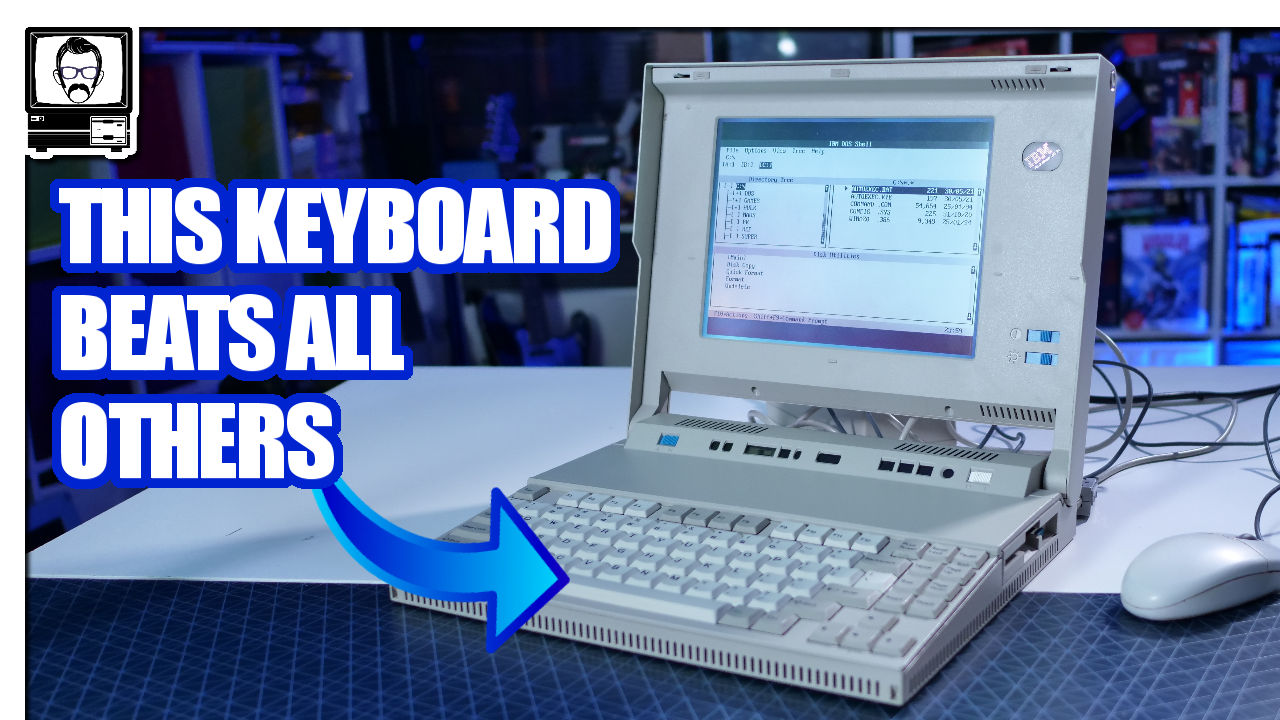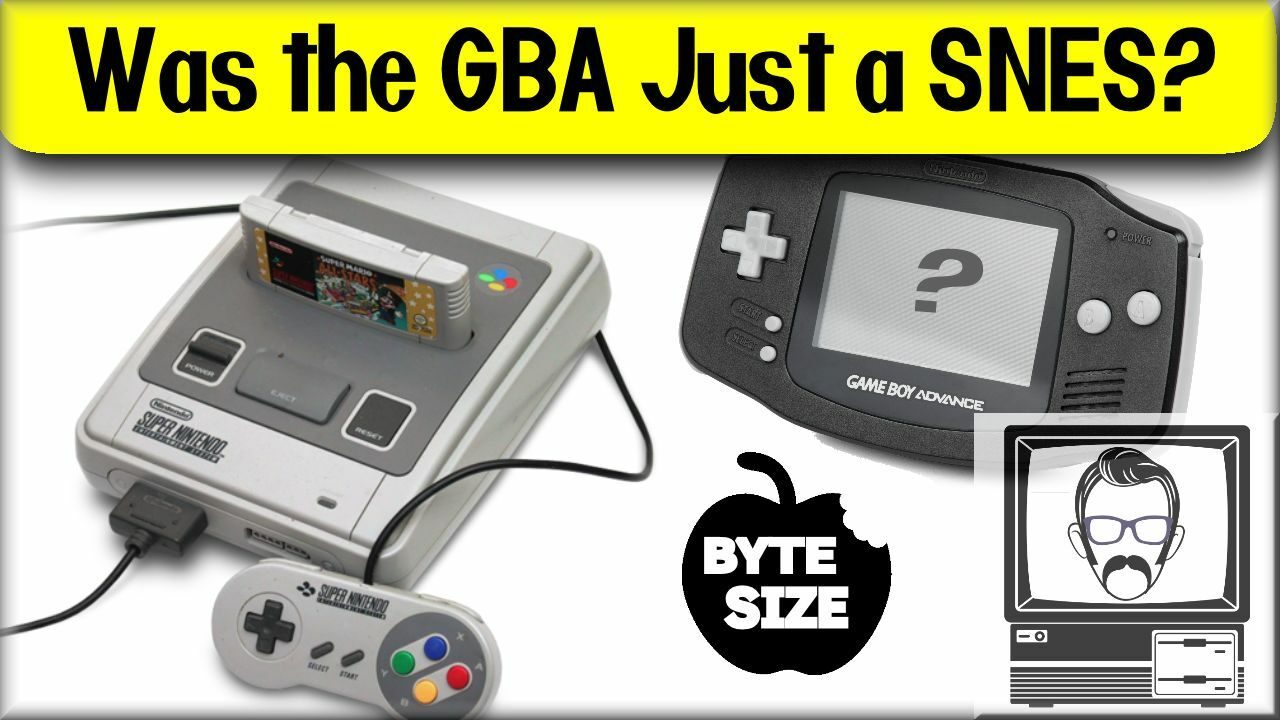If you think of seminal games. Key titles for video game companies. Then things don’t get more important than Donkey Kong; a title which not only introduced 3 of their main characters, but which also became Nintendo’s first video game smash hit.
Given where Nintendo are now, it’s no surprise that they often go back to their roots. With the recent unveiling of the Switch 2, it seems that our favourite Donkey…. our favourite Kong… Kong Donkey has done exactly that. The Donkey Kong we were all familiar with has stepped away from the 3D design ushered in by Rare with Donkey Kong Country in 1994, and aligned more with his barrel lobbing origins. This was actually revealed back in 2022 with the Super Mario Bros. Movie, but details aside, it gives me an opportunity to talk about two things. First, Donkey Kong wasn’t even created by Nintendo. Second, it wasn’t even their most important game.
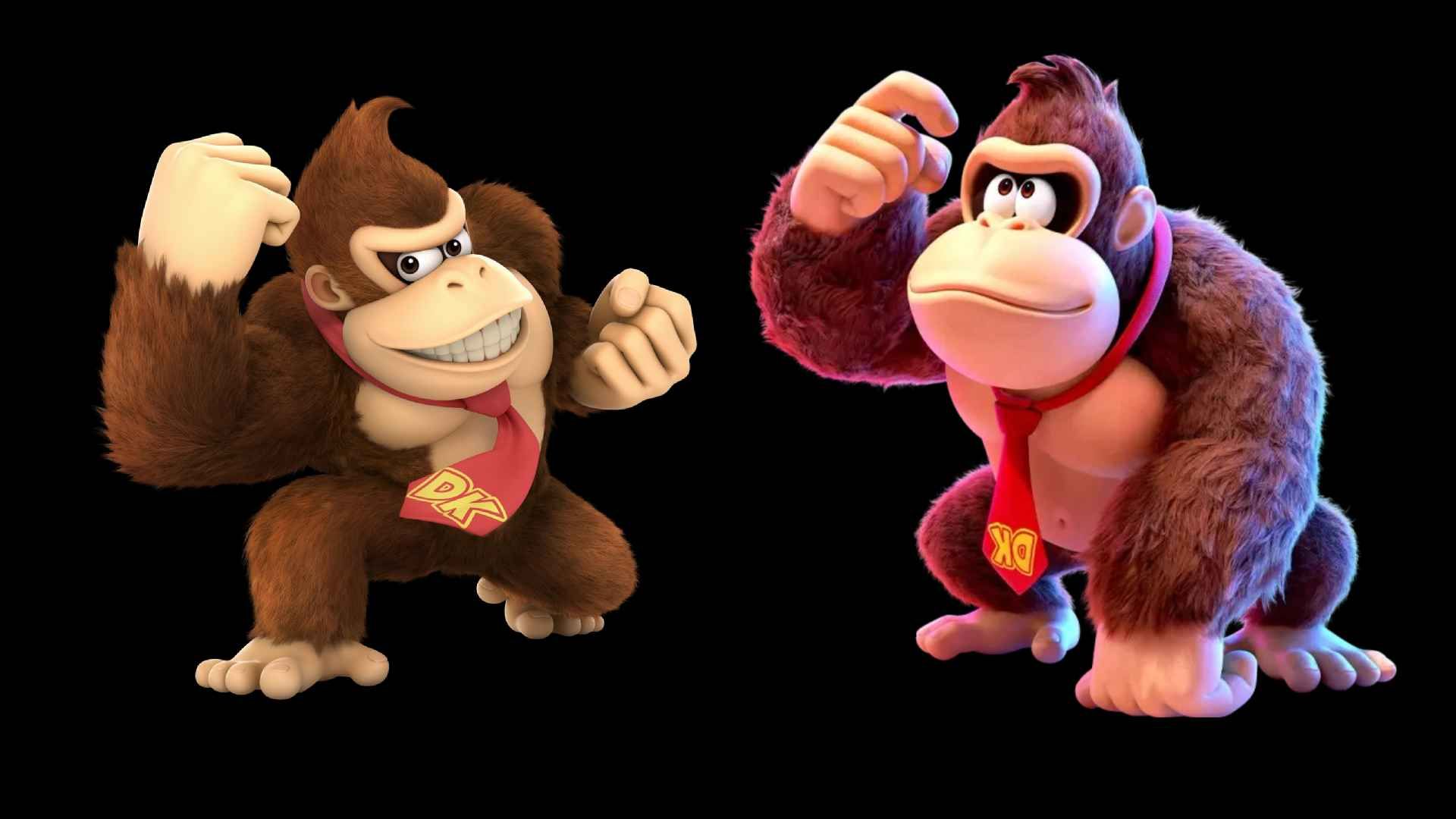
DONKEY KONG.
In the 1970s Nintendo were busy creating arcade cabinets such as Battle Shark, Test Driver, Space Fever and Sheriff. These games were all well and good. They made an impact. They were successful, sometimes even in the West, but they weren’t all that memorable. They needed something that would make people stand up and go, ohhhhhh, this is even better than Pac-Man. That secret sauce that’s hard to find, and even harder to get out of the bottle.
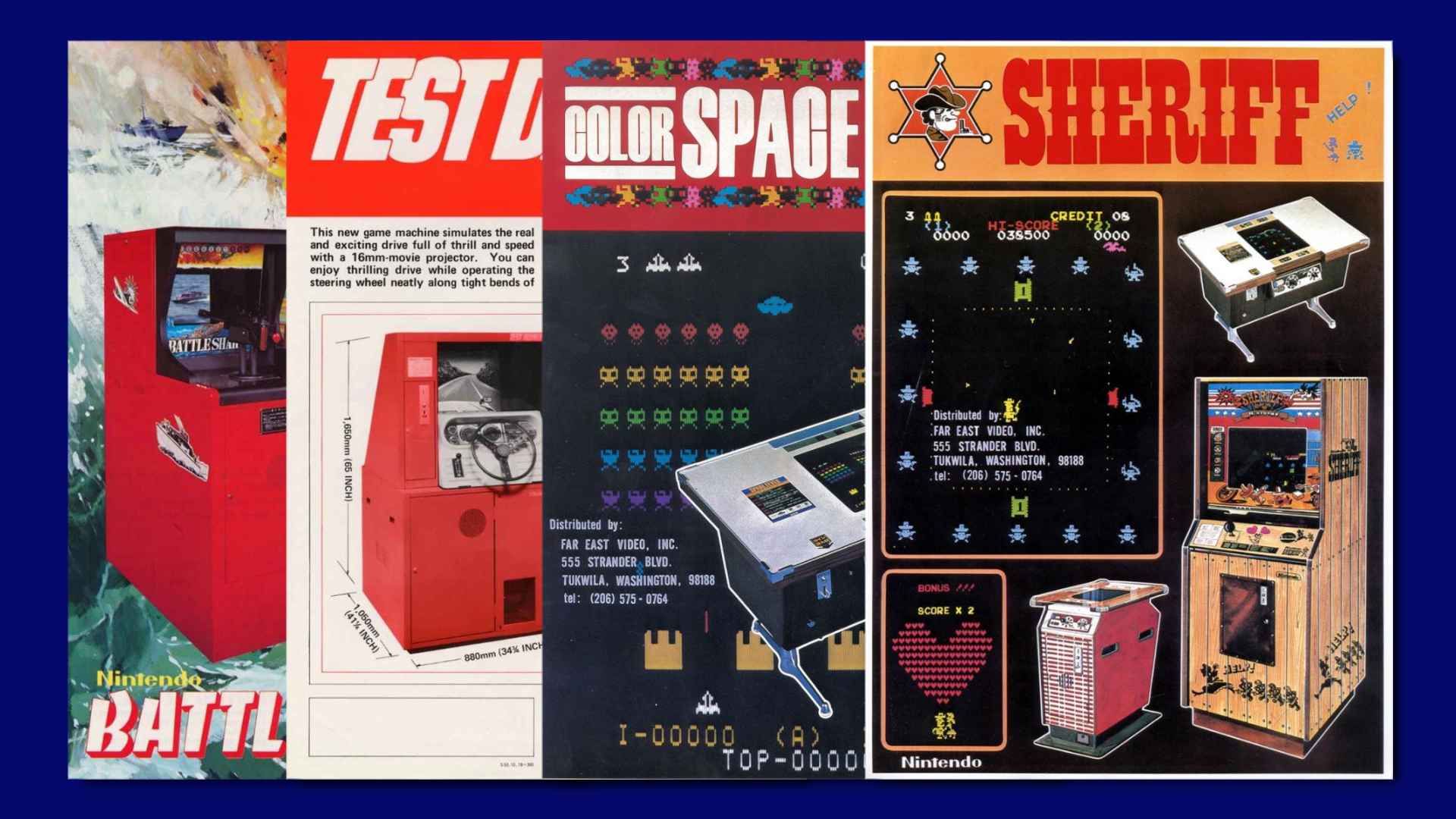
So they created Donkey Kong. The end.
But, it’s not as simple as that. At the time Nintendo weren’t developing a lot of their games in house, instead titles such as Space Fever and Sheriff were outsourced to a company called Ikegami Tsushinki; a manufacturer of broadcasting equipment who had turned their hand to this new electronic fad, exclusively for Nintendo. Radar Scope, an angled Space Invaders clone dreamt up by Nintendo’s R&D2 team and released in 1979 throughout Japan was one such title. Radar Scope was actually an attempt to hit that secret sauce, by creating something a little more adventurous than clones of competitor titles, and for a while it was quite successful. So, when they opened up their Western branch; Nintendo of America, in 1980, the then president Minoru Arakawa ordered 3,000 machines to replicate their Eastern success1. This might have worked, had production delays not meant that they were set back until the end of the year, missing the rapidly advancing arcade boat. By this point, other, similar and better games had been on the market for a while, and Radar Scope just didn’t appeal to Western audiences in the same way games like Galaxian and Space Invaders had already done.
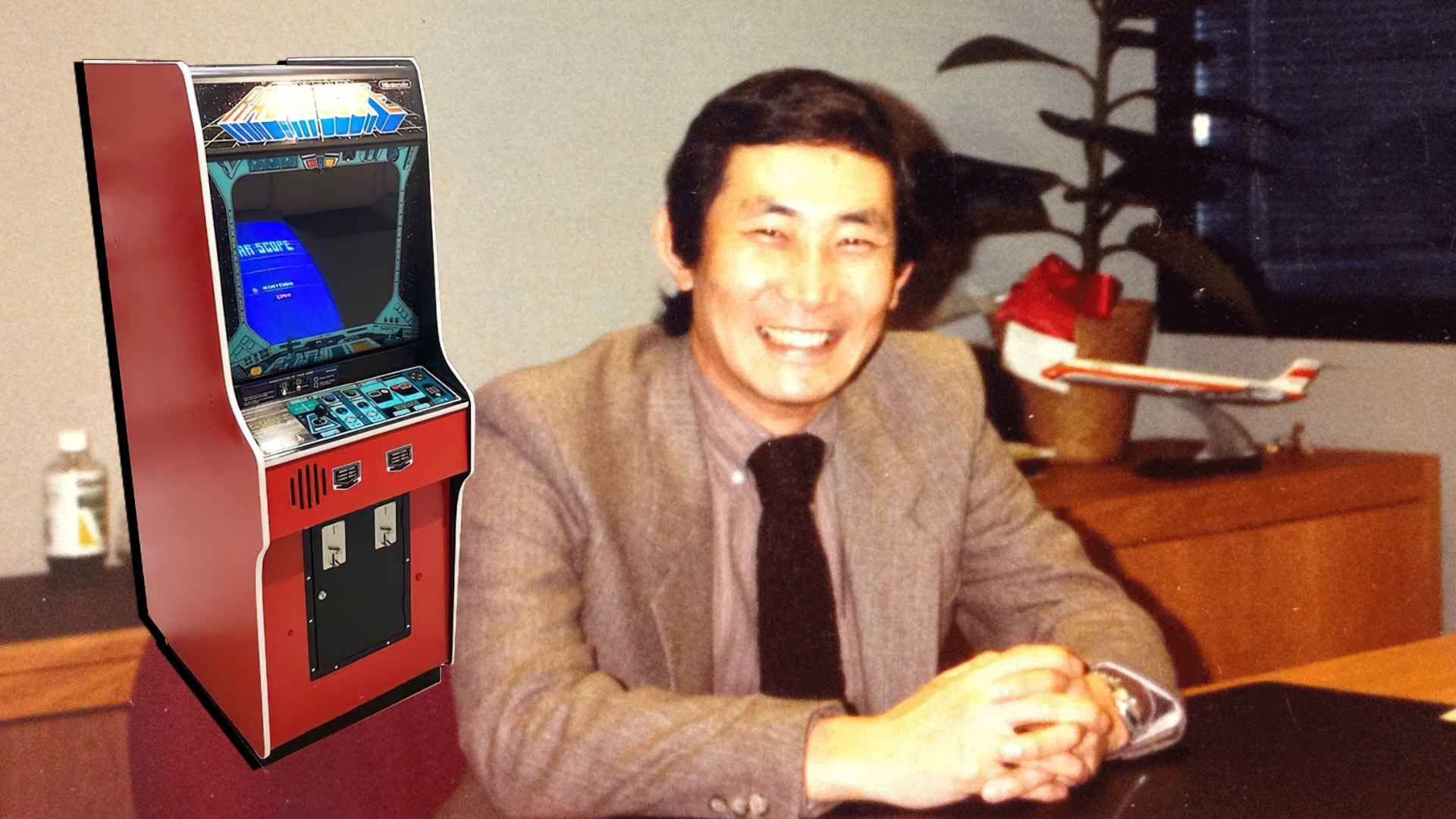
This left Minoru Arakawa with an immediate financial crisis. One that could have destroyed Nintendo of America before it even got started. But he had a lifeline. Nintendo’s president, Hiroshi Yamauchi, was actually his father in law, and so he put his case forward for a game that could convert the 2,000 remaining Radar Scope machines they had into something that their American audience would find appealing.
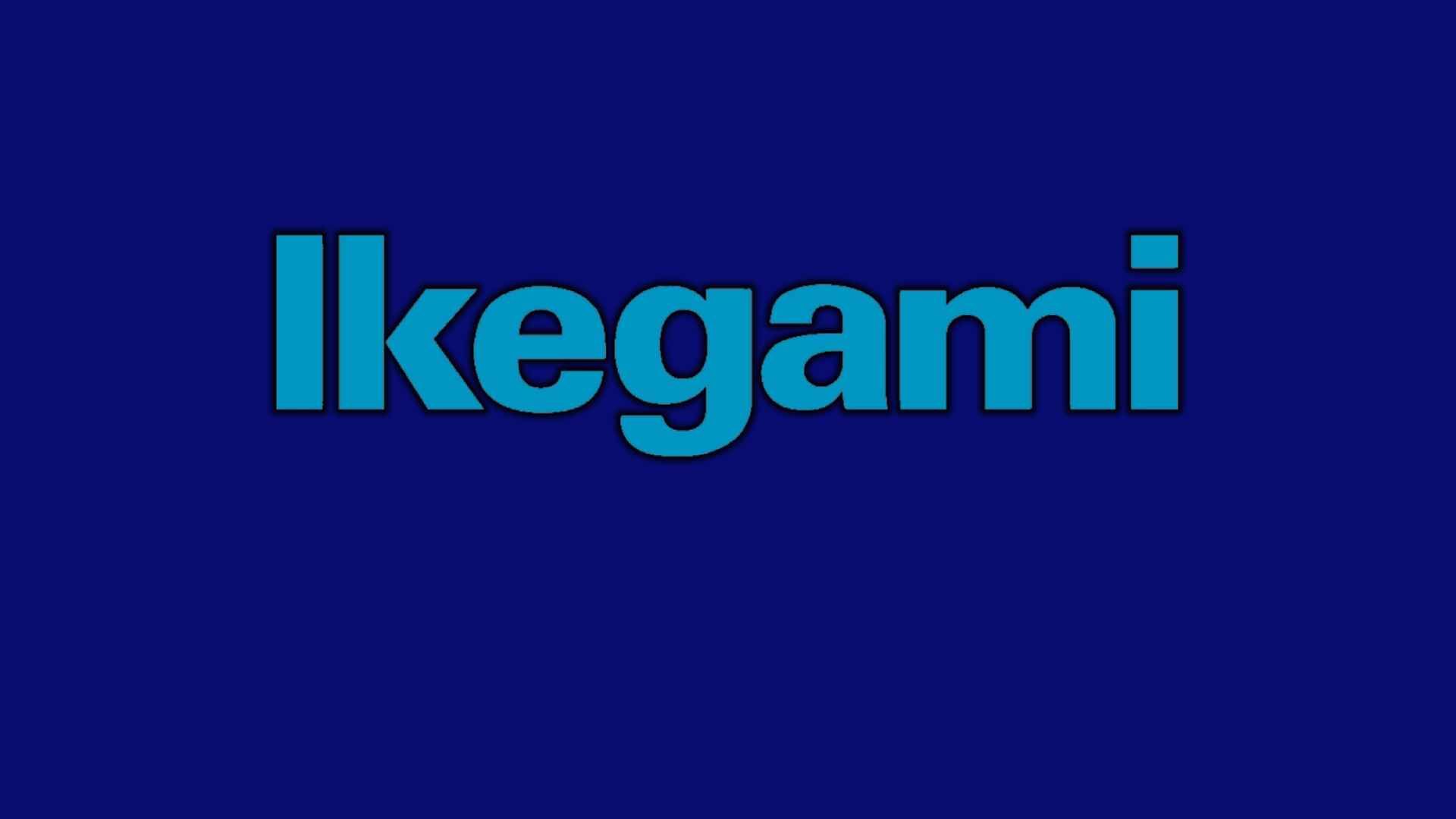
Nintendo’s R&D1 team was put to work.
It was an idea dated 56-3-212, which in our calendar is the 21st March 19813 that landed in Ikegami Tshushinki’s offices at the start of April, signed by Nintendo’s Design Section Chief Shigeru Miyamoto. The plans consisted of three A4 sheets outlining the game’s content and characters. Five sheets containing game screen sketches and a single sheet depicting a diagram of the proposed animation style.
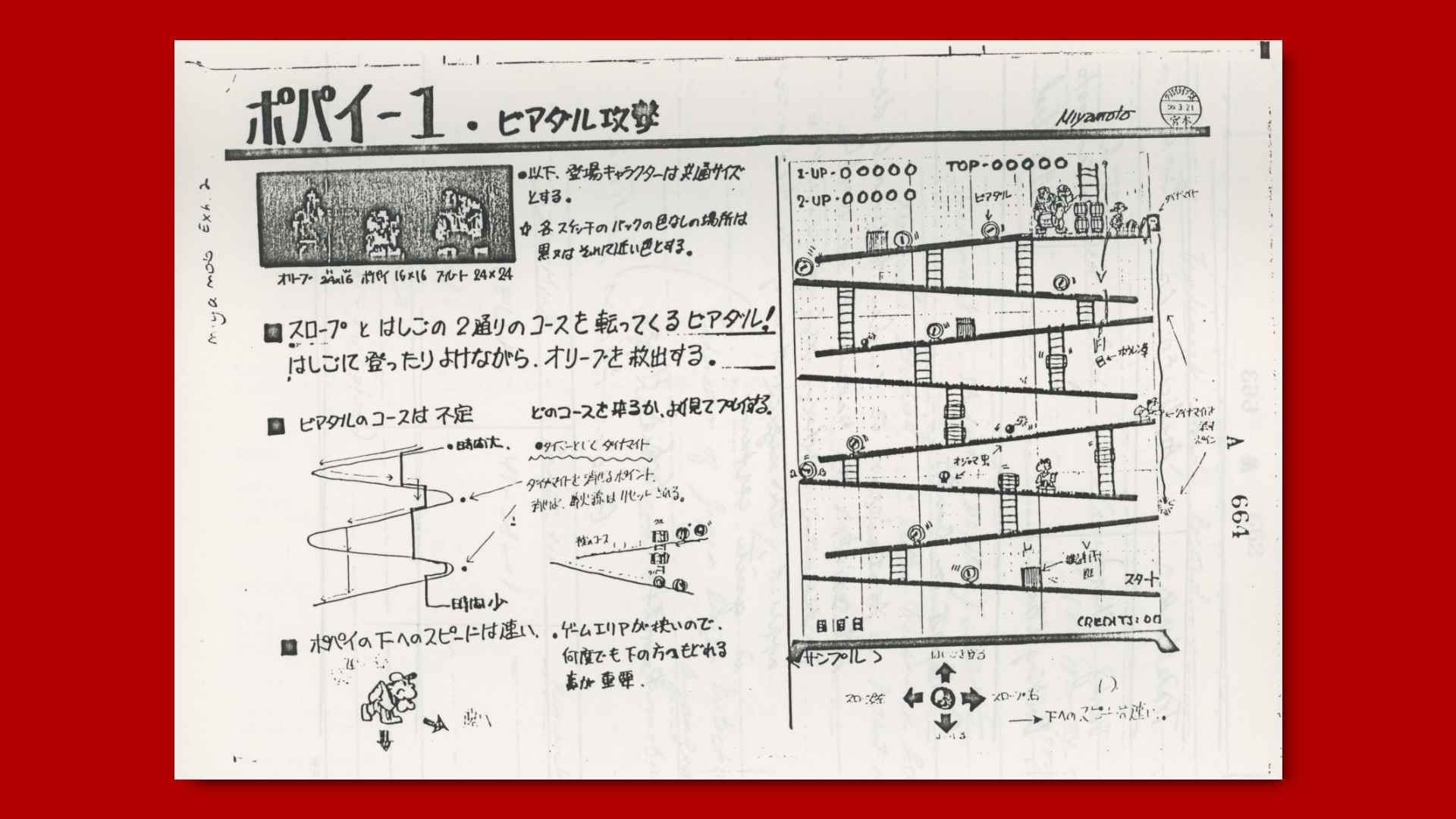
Miyamoto wasn’t a game developer. He was in fact an industrial designer who had created some art of previous games since his hire as an apprentice in 1977. In March 1981, he was also the only person free to work on creating a game for Nintendo of America. So, under the supervision of Nintendo’s head engineer, Gunpei Yokoi, he got to work on designing a game for Ikegami to develop. In a 2016 Wired interview4 he explains how he told family and friends he was going to spend the next 5 months hauled up in Nintendo’s offices.
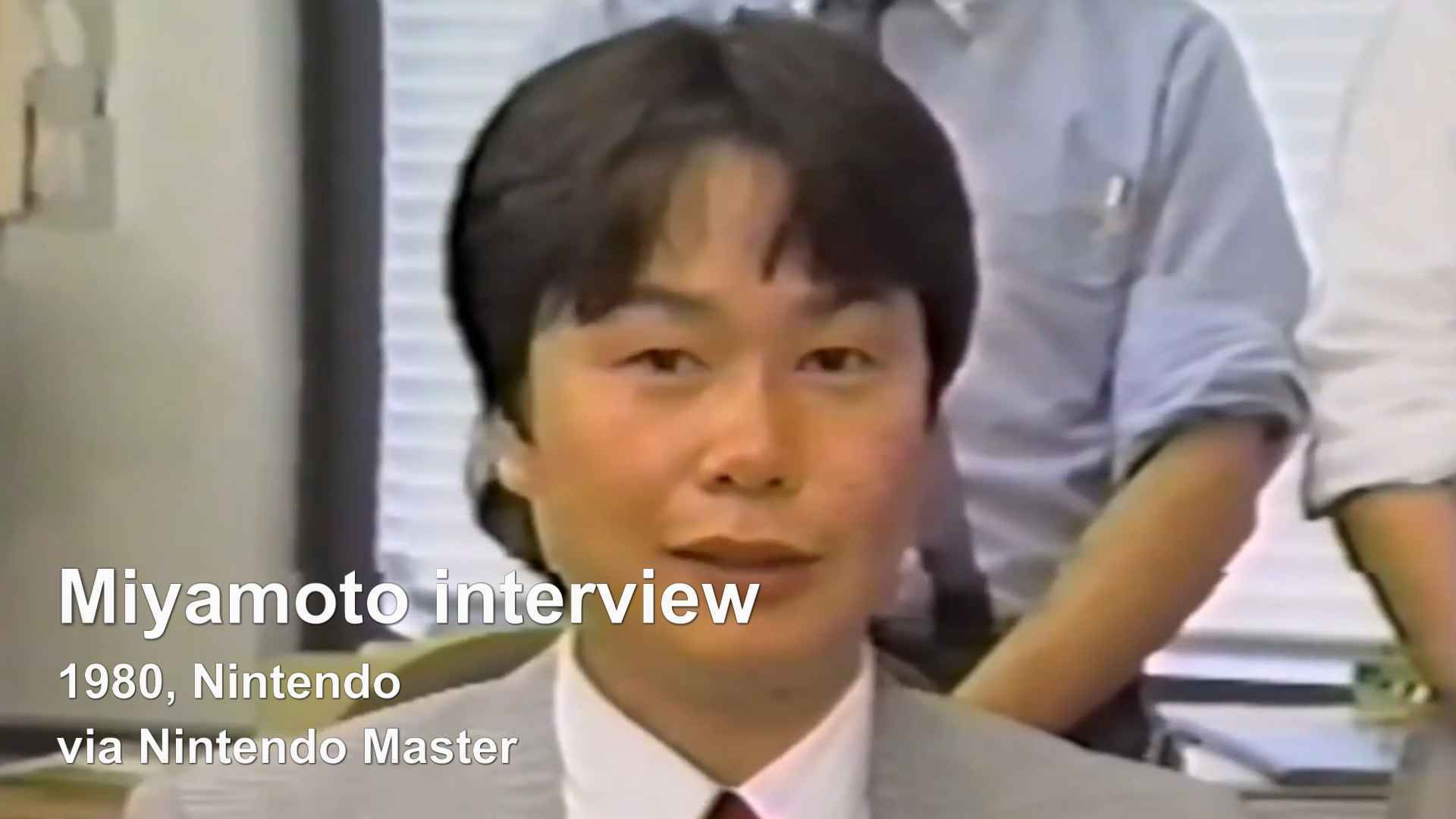
Originally ideas were batted about that Yokoi dismissed as being too complex, including different sized characters, moving in different manners, and a mechanic that catapulted the protagonist back and forth across the screen, but settled on an upward traversing scenario, with moving obstacles.
His original concept was for a game called “Popeye’s Beer Barrel Attack Game”. The initial sketch showed the protagonist as Popeye, with the antagonist, Bluto, seemingly having kidnapped Olive. Set in what seemed to be a girder filled construction zone, it seemed to borrow from an earlier Popeye cartoon based in a similar environment.
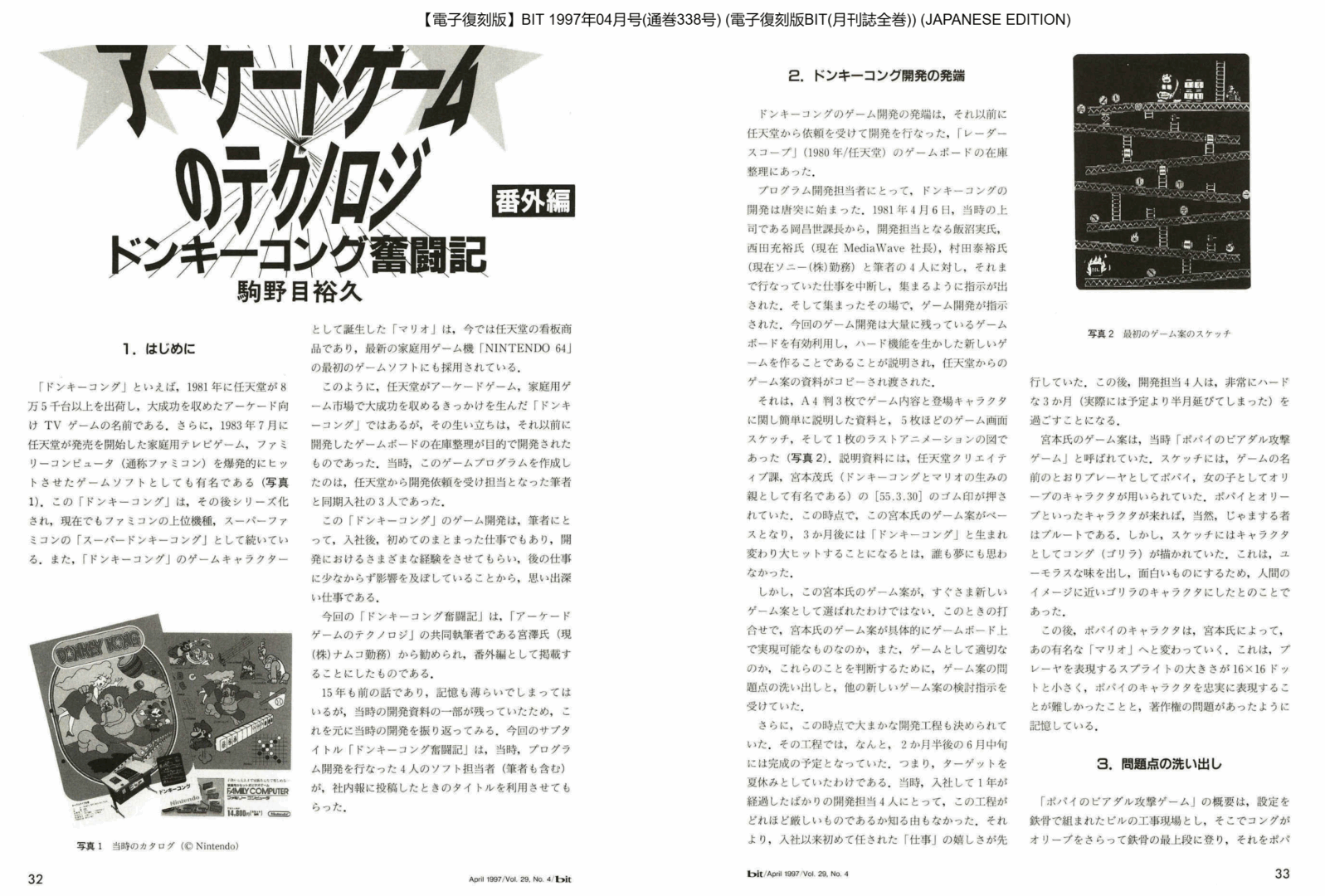
As cited in an article written for the Japanese computing magazine Bit, in April 1997, and translated on shmuplations.com5 in 2023 for Critical Kate; oin 6th April 1981, Hirohisa Komanome along with Minoru Linuma, Mitsuhiro Nishida and Yasuhiro Murata were abruptly called by their manager at Ikegami, Mr. Masayo Oka, into a meeting. They were told to stop what they were currently working on and begin this new and urgent project handed over by Nintendo, so their existing stock of leftover machines could be converted. What’s more they only had 3 months to complete it.

Having developed Radar Scope, this team knew the hardware inside and out, and they also knew that by replacing the original ROM chips, they could completely change the title running on the cabinets. The initial questions really were whether the Radar Scope hardware would be capable of running this new game, and if it was, did they even have enough time??
Donkey Kong Design
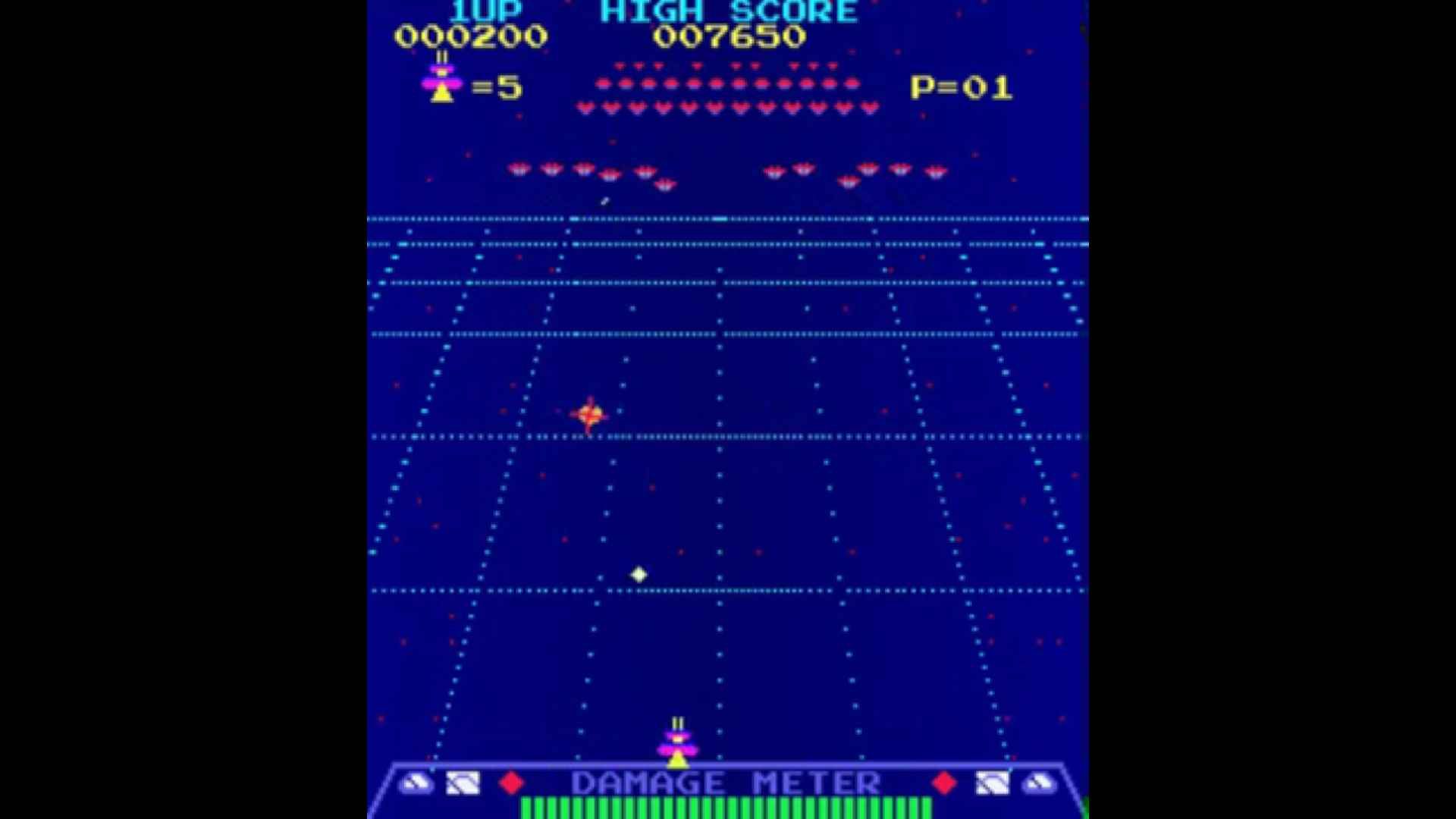
Radar Scope was actually a pretty simple game, based on the Namco’s Galaxian hardware from 1979. The concept of waves of enemies progressing down the screen, with break out craft was really no different, apart from being tilted at an angle to make the whole affair seem three dimensional. To this end, it relied on a simple Zilog Z80 CPU, clocked at 3.072MHz, 512 bytes of RAM, an NEC 8035 Sound Chip and a video output resolution of 224×256. All the direct addressable graphics and sprites were held in ROM.
But hardware limitations aside, Ikegami also needed to make the conversion as fast and straight forward as possible. To that end, they were also limited by physical constraints of the cabinet, including the control scheme. Radar Scope had a two directional joystick, allowing lateral control, one fire button, and a button each for single and two player mode. For “Popeye’s Beer Barrel Attack Game”, that simply wasn’t going to fly. The entire control unit could be replaced, but it was cheaper to reuse components where possible.
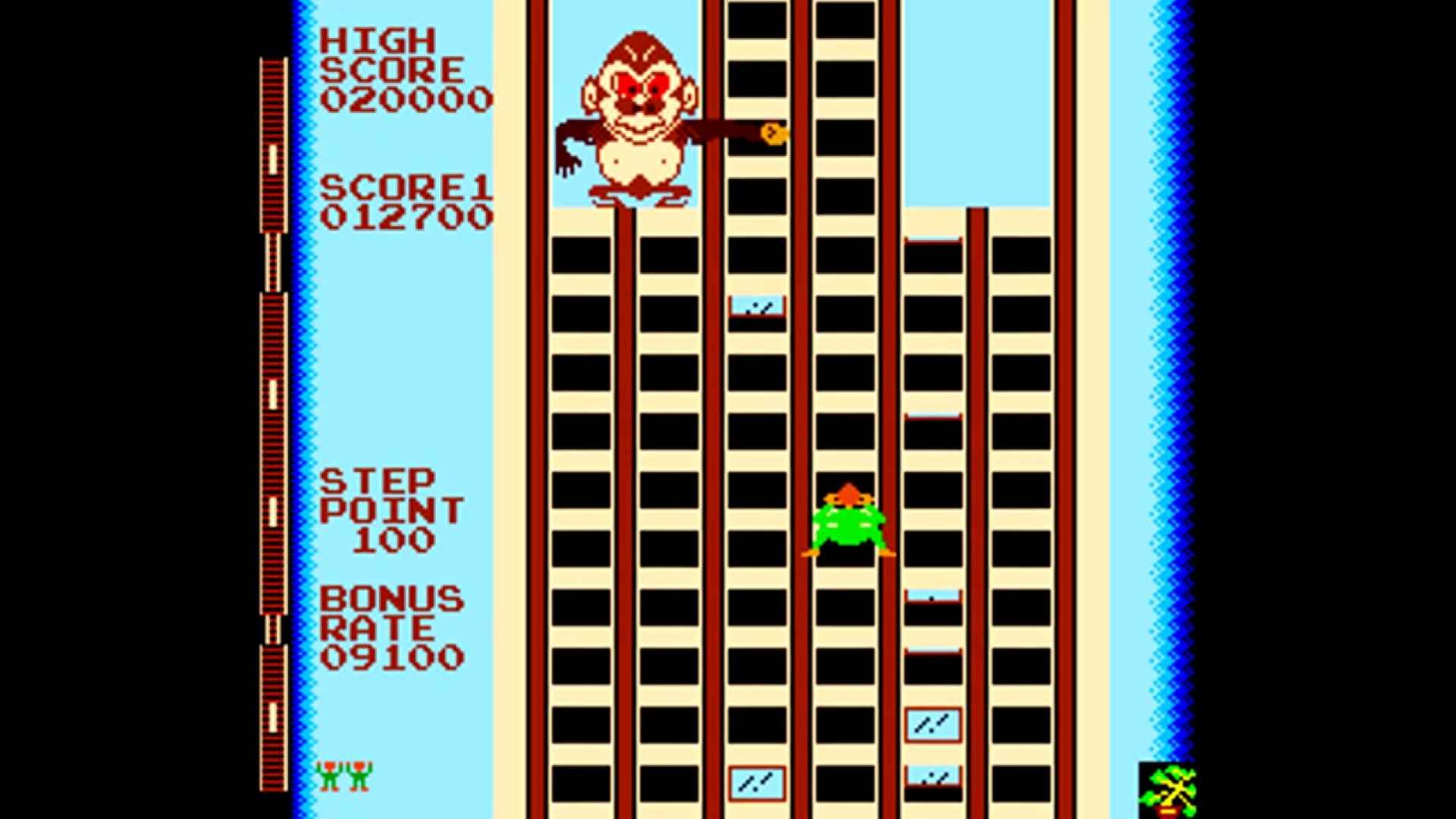
But Ikegami also needed to make something good, it had to do better than Radar Scope, but they had reservations about the game itself. If Nintendo wanted a winner on their hands then, they needed winning elements. The team concluded that the game idea was essentially a combination of Crazy Climber and Pac-Man. But having got the lay of the land by developing previous Nintendo games, they were concerned over several elements;
- The barrel movement was boring. Simply rolling, with no element of surprise.
- The levels were boring, and lacked individuality. Each one a simple variation of the first. Meaning players had no incentive to go on and see what was next.
- Miyamoto’s original idea was for the player to defeat Bluto by lifting up the top girder with a jack, allowing the barrel stash to roll onto him. But this felt too confusing to implement.
- The characters needed to be lively and comical. This would be difficult with the hardware.
- There’s potential for a lack of speed. A timing element would likely be needed to add urgency to proceedings.
- The setting is uninspiring. A construction site doesn’t conjure exciting thoughts or images.
- There was no centrepiece feature. Something eye-catching that others games didn’t have.
- There was no stage select, and therefore players would feel unstimulated by the routine gameplay.
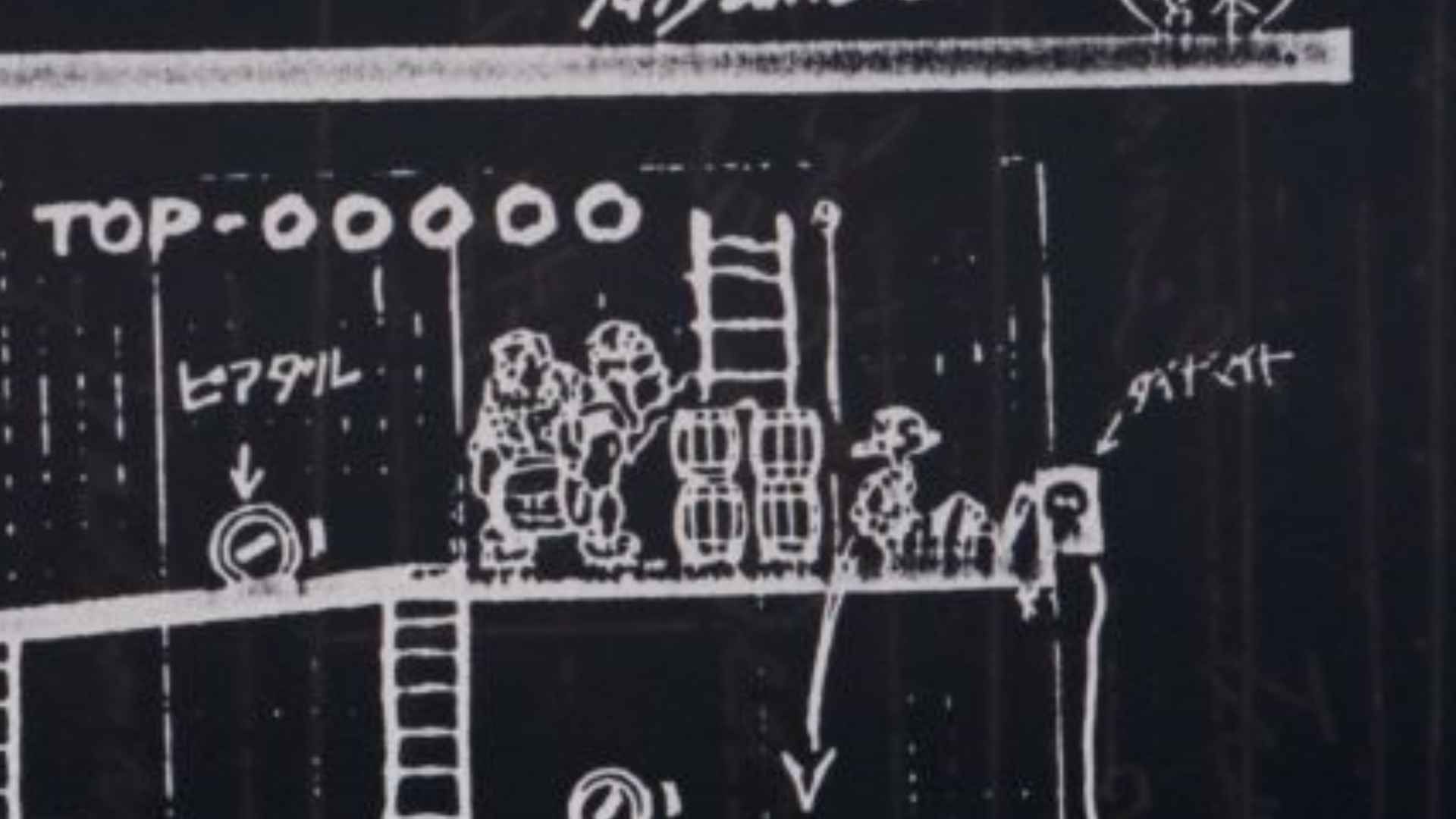
Concerned about being called a Space Panic clone, initially Ikegami suggested that they scrap the idea and go with one of 13 other ideas they came up with. This included a “Jack and the Beanstalk” scenario, a “Fishing Game”, a “Space Shuttle Construction Game” and “Save the Patient!”; a micro-battle from inside the human body, based on the film Fantastic Voyage. But working things through with Miyamoto, they collectively decided to improve upon the original idea.
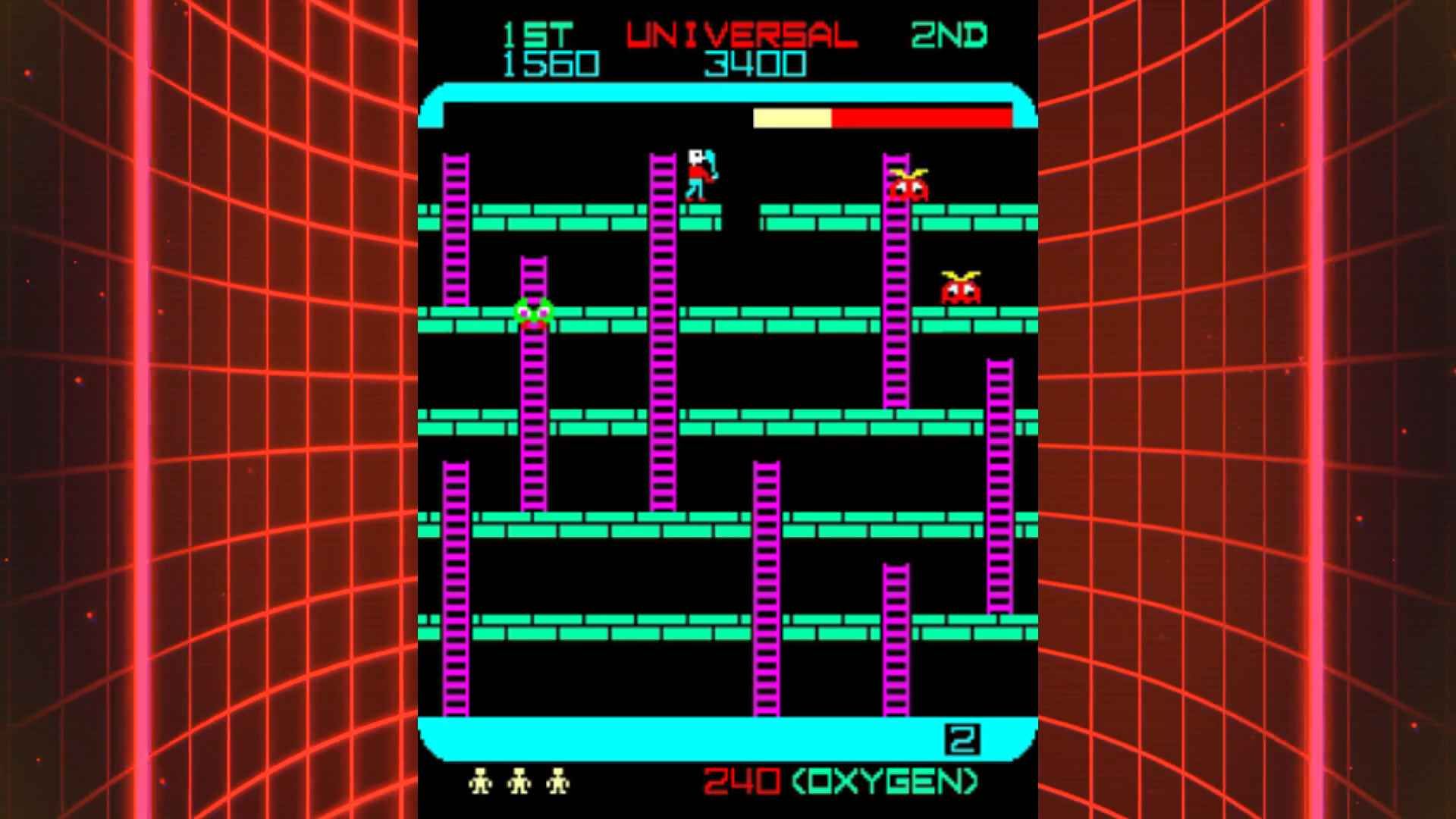
Because of the difficulty in creating a workable Bluto sprite without him being huge, he was first swapped out for a Gorilla. Easier to portray, and perhaps something also borrowed from Crazy Climber. Although Miyamoto cites King Kong and Beauty and the Beast as influences. This was the first change, but by very means, not the last.
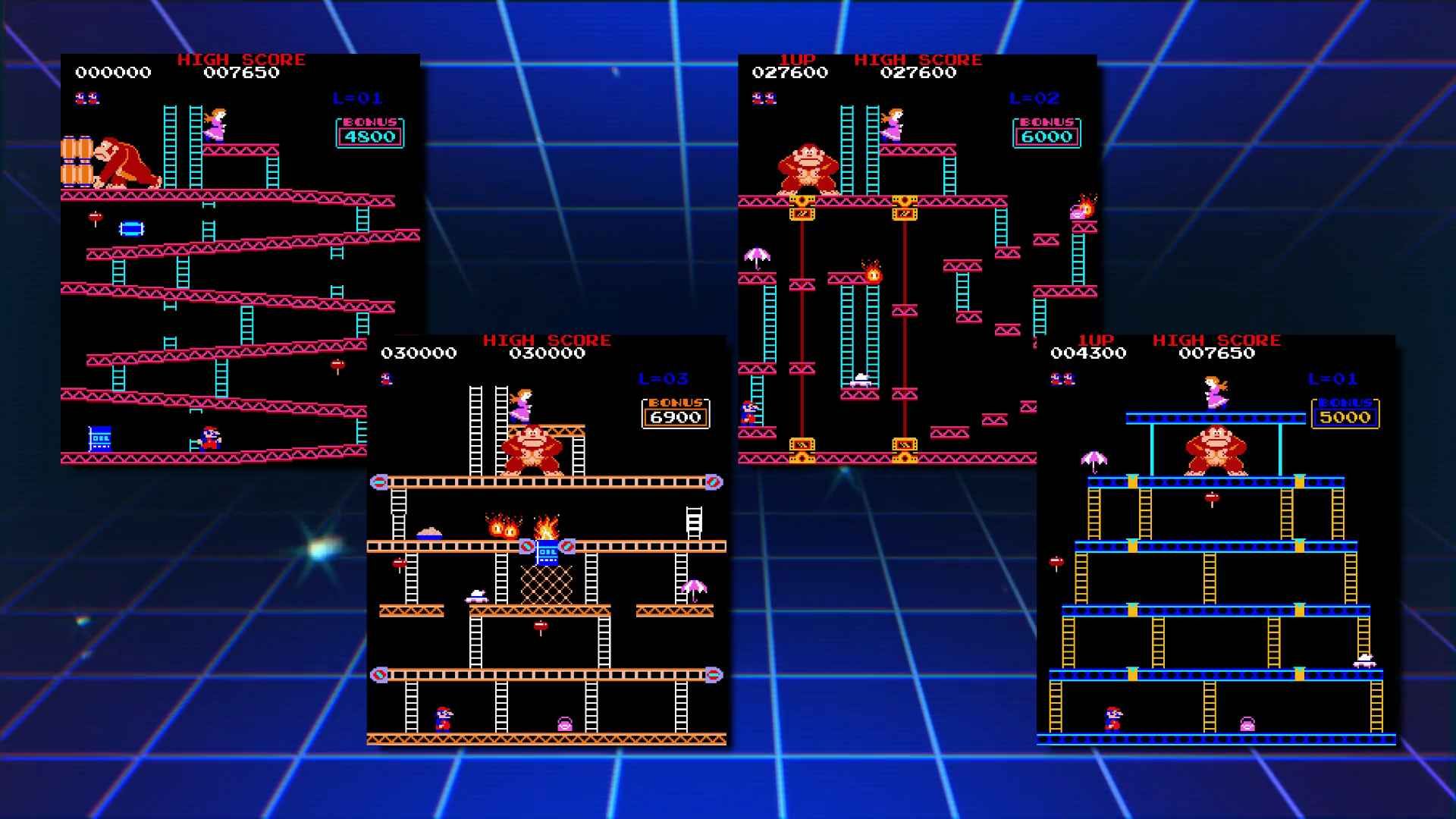
To mix things up, the team looked at the game Scramble, by Konami. In this recent release, the scenery and gameplay style changed from level to level. This was the “what’s next?!” excitement factor which inspired the team to create unique stages, that you could interact with differently. The result was a 4-stage loop; the original barrel dropping stage, a conveyor belt maze stage, an elevator section and the fourth stage climax where the Gorilla is defeated. Each round with a decreasing timer amount to up the ante. With these additions it was decided that the size of the opening stage should also be simplified from 7 girders, to 6.
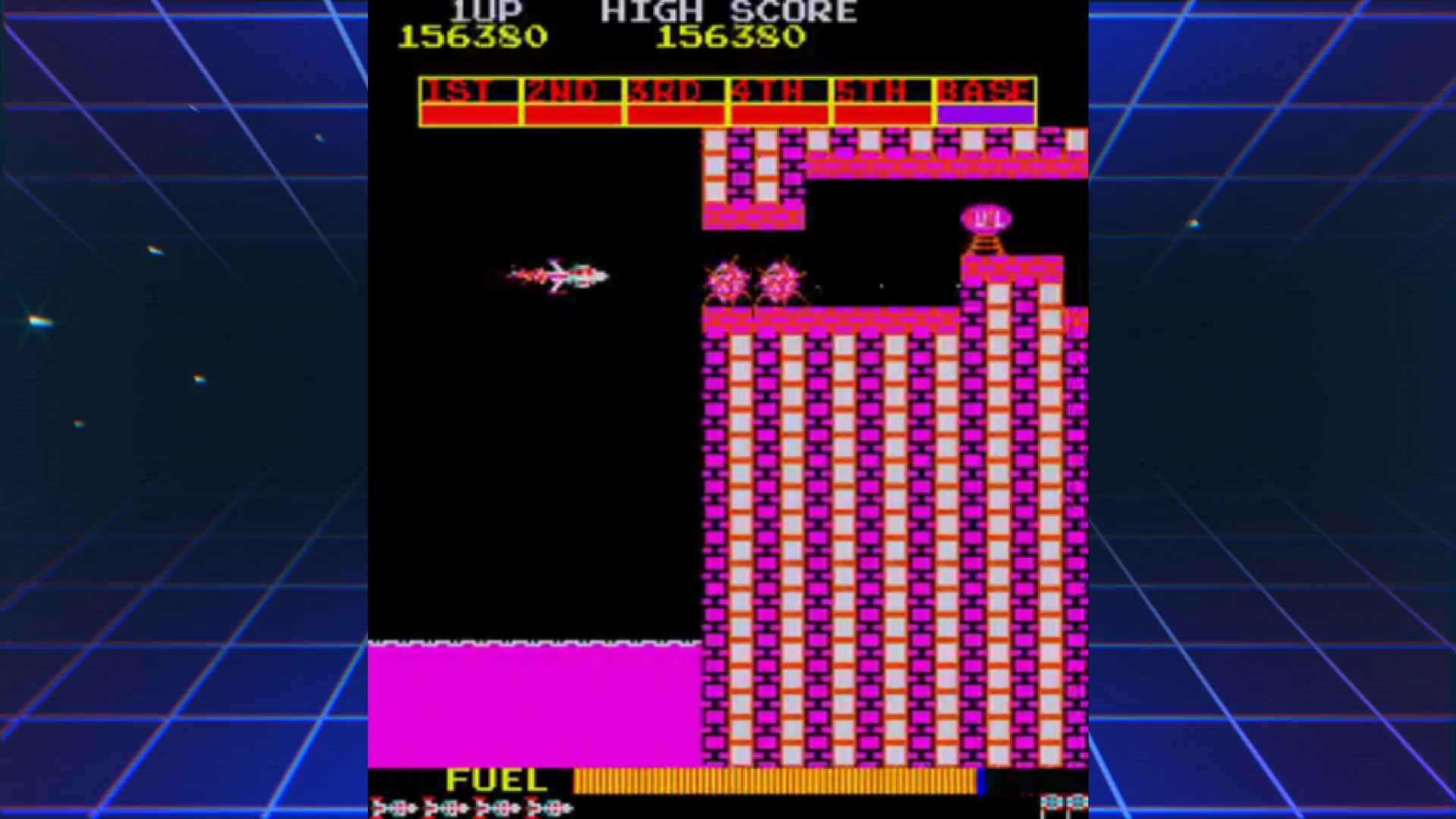
The jack idea was also scrapped, allowing our antagonist to be defeated simply by climbing the top girder, meaning that he has to quickly grab Olive and run to the next level. Allowing progression of the story.
But perhaps the biggest change was Ikegami’s inclusion of “the jump” feature. In the original design, the barrels had to be defeated either by using the hammer, or evaded by climbing up a nearby broken escape ladder. But this running style game was deemed too stressful, whereas a jump movement, which was uncommon at the time, would not only form a compelling mechanic, but would make each level faster, more fun, and also allow for simpler controls. It also allowed the variation in level design which they felt was necessary to be a hit.
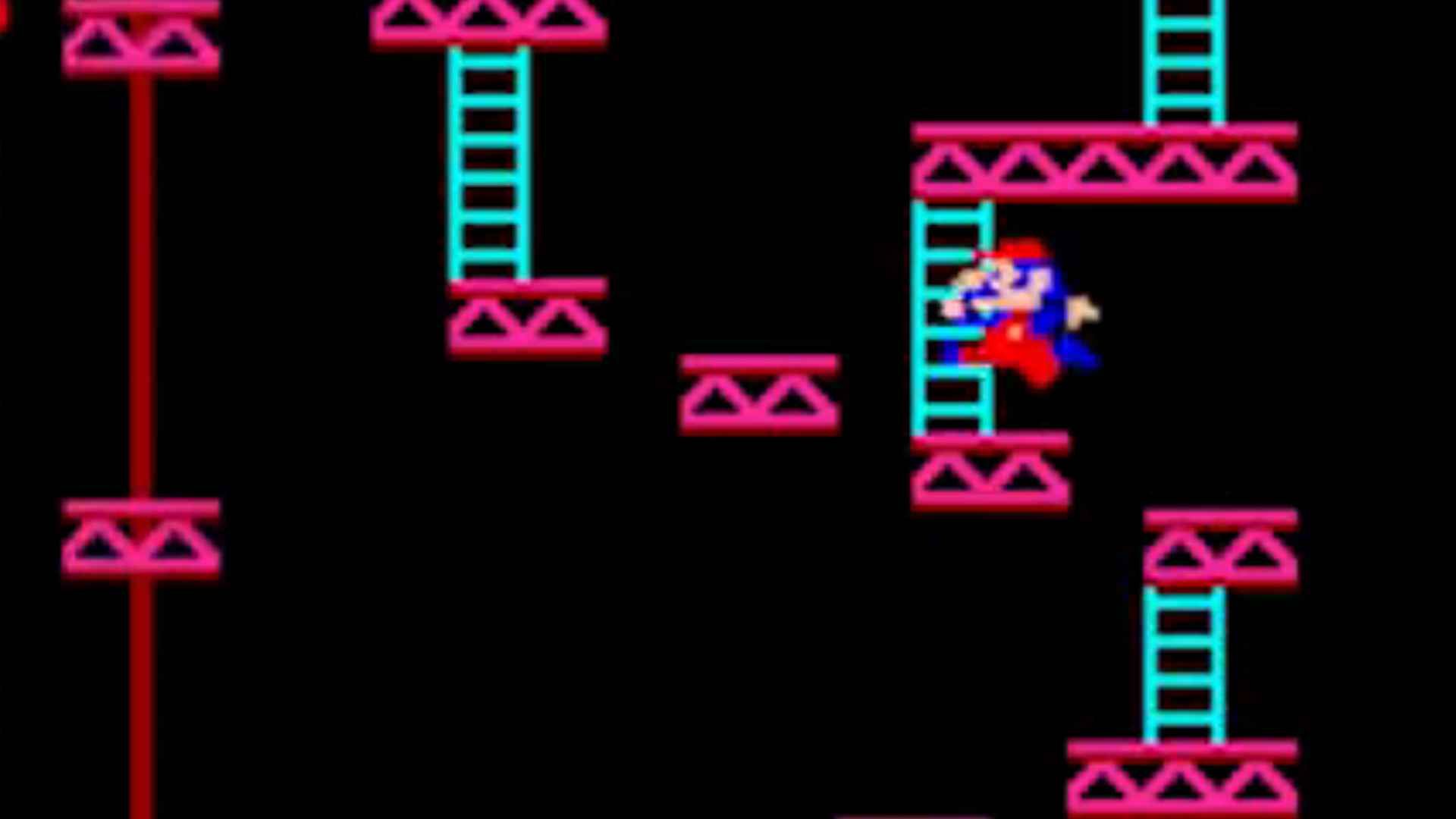
Although Nintendo and Miyamoto had been holding out for the Popeye inspired design, especially due to Popeye’s popularity in Japan at the time, it was becoming clear that they wouldn’t be able to get worldwide licencing rights in time for their deadline.
In his April 1997 Bit article, Hirohisa Komanome cites that along with the copyright issues, it was difficult to faithfully represent Popeye’s character due to the small size of the sprite, and so Miyamoto created a character that was much easier to portray, whilst borrowing elements from Popeye, but also Micky mouse.
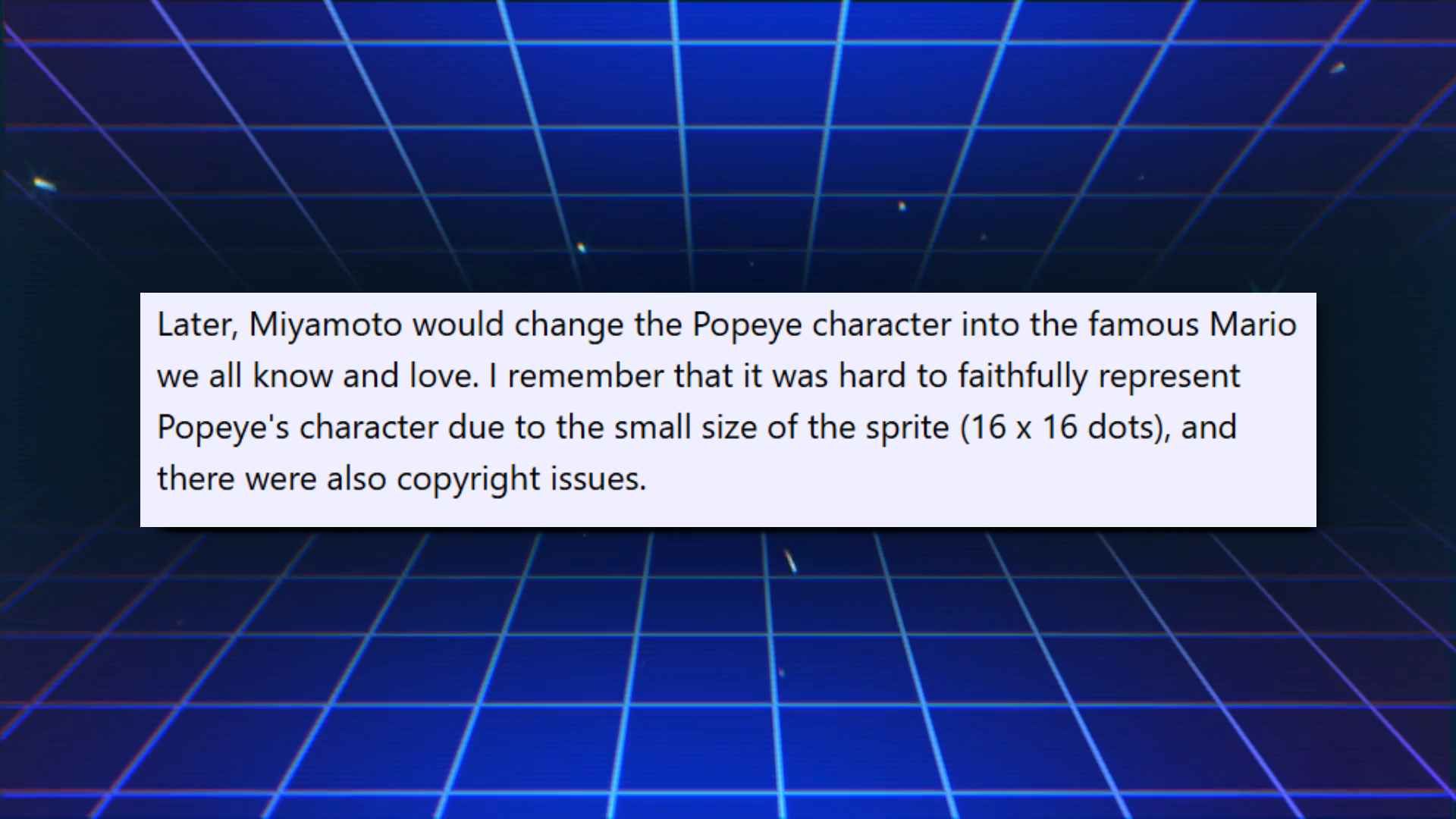
Fitting with the construction site theme, our carpenter sported a similar hat and facial features to Popeye, but also clothing that was reminiscent of the Disney rodent. But by adding features such as a ‘stache and red overalls, it allowed a clear sprite to be defined in only a handful of pixels. At this point Miyamoto named him “Mr. Video” and given his preference for character led design, started to envisage other games and personas he could be used for. To go alongside “Mr. Video”, a less Olive looking sprite was created as our hostage, what would become Pauline, and the Gorilla was given context as being our carpenter’s pet who had escaped from his cage and gone on a rampage.
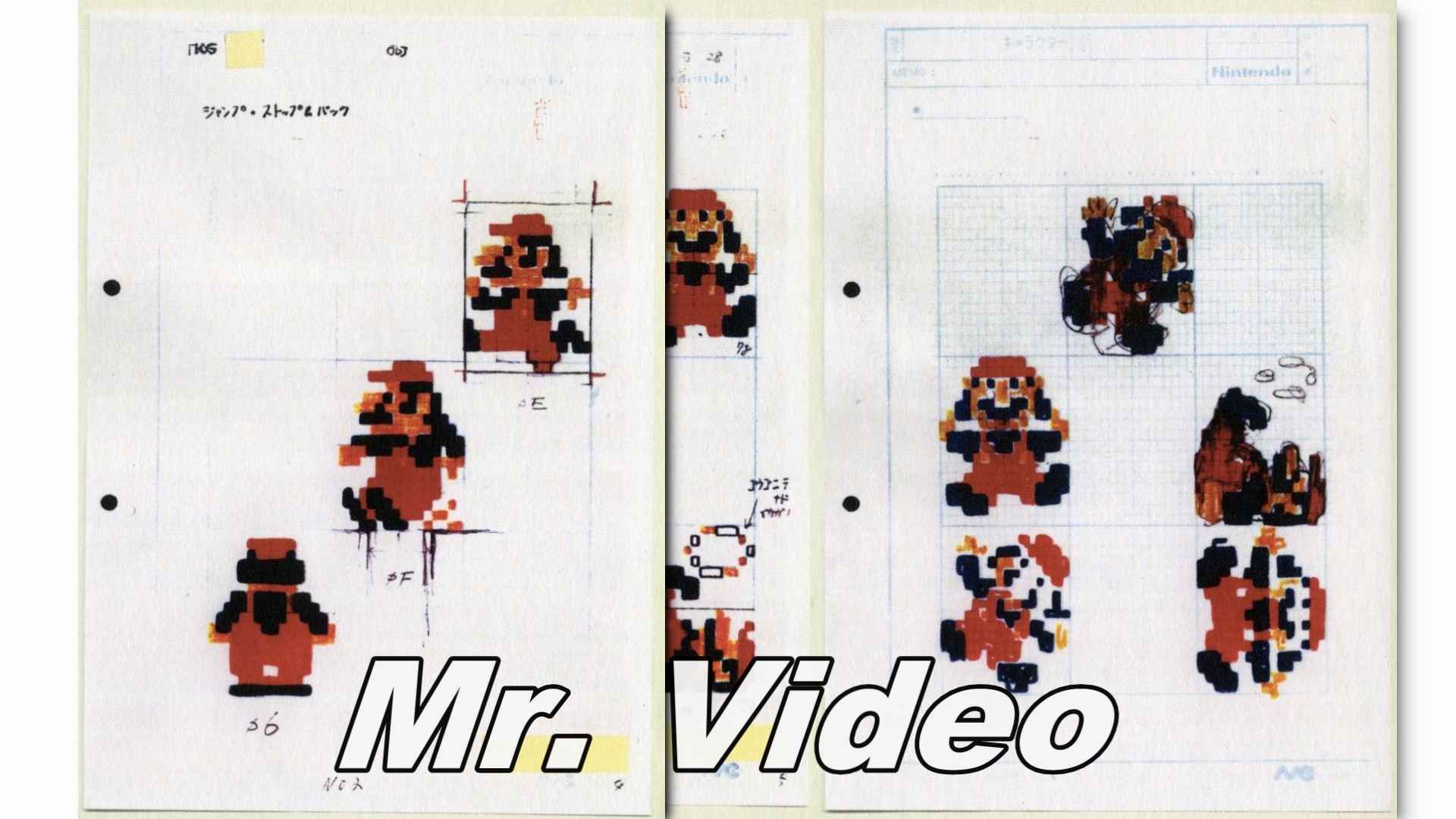
We also had a name; Donkey Kong. Because it’s like King Kong, but he’s actually a Donkey wearing a furry costume.
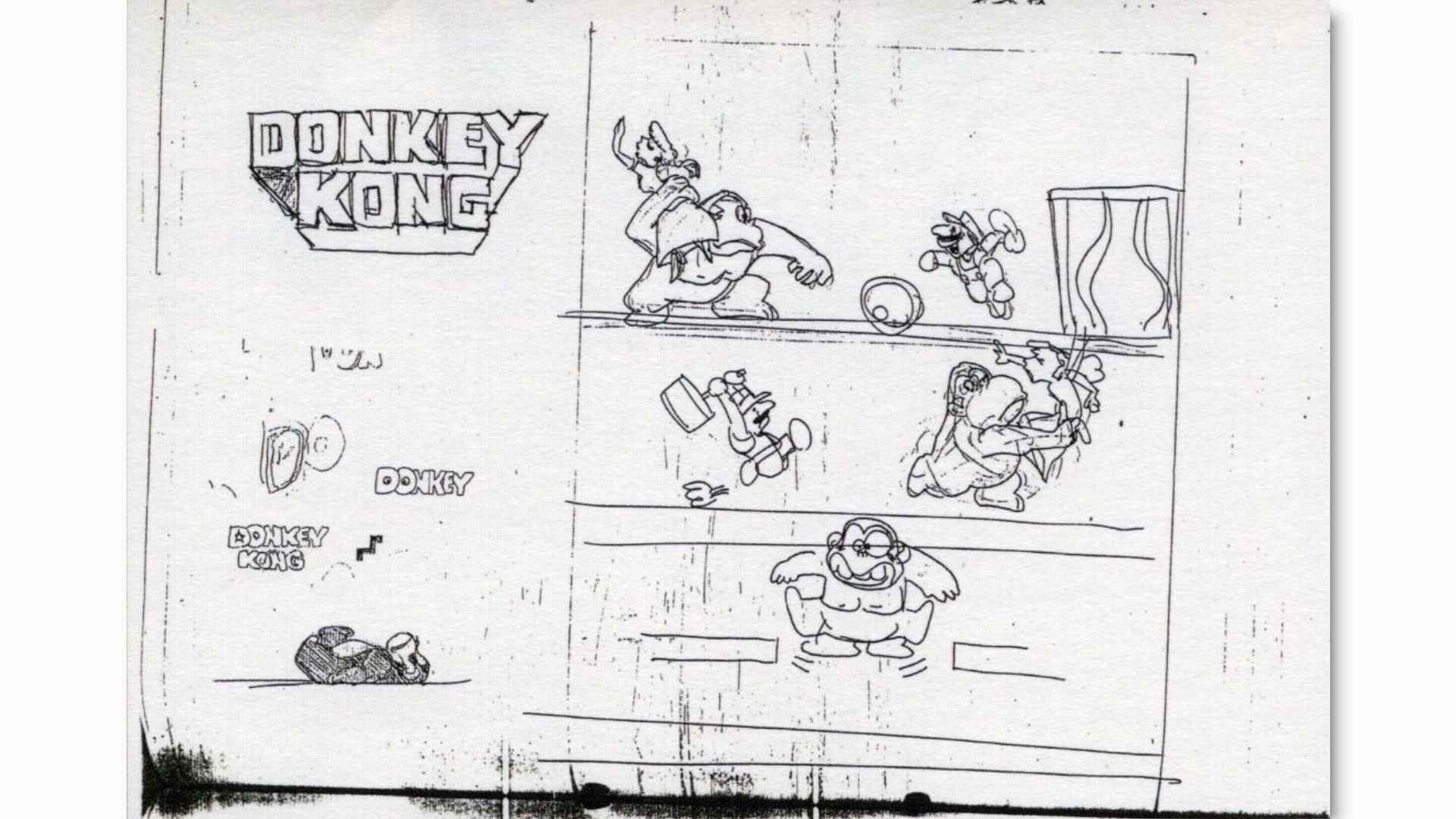
It’s actually because they wanted an English name to convey this silly, stubborn gorilla. In a late 90s interview Miyamoto confirms that he used an English translation dictionary6 which, among others stated that “donkey” meant “ass”, “idiot” or “silly”, and well, that kinda stuck. Even after Nintendo of America pointed out it didn’t actually translate to those thing. It was quickly slapped over all the design documents from that point forward, and well, we had our game.
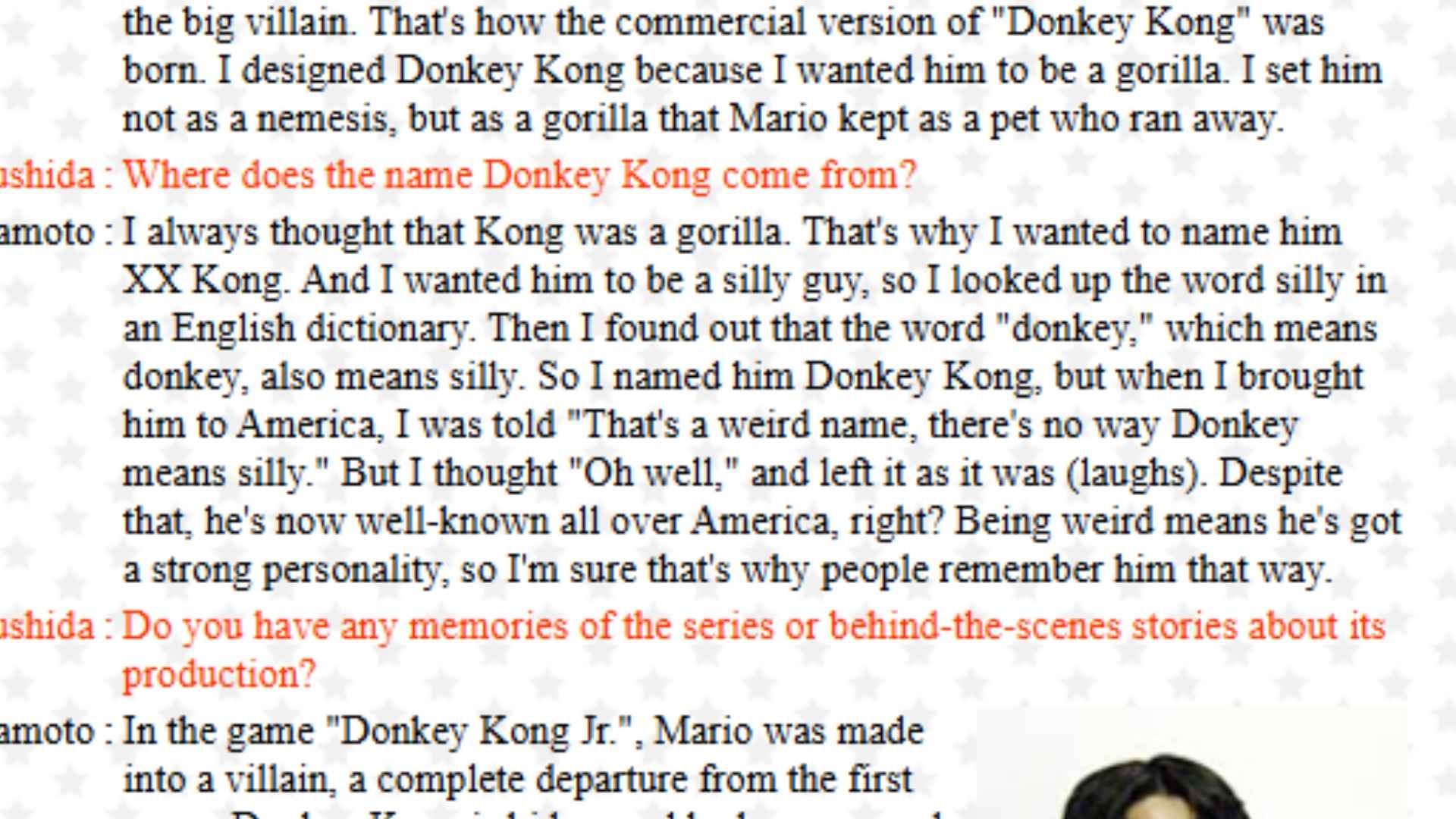
At this point, it was only 10 days from when Ikegami had received the original planning documents. But with everyone happy with revisions, it was now up to their small four person team, to get it working….
The first order of proceedings was to create the programming flowchart. This is a visual diagram that represents the steps and logic of the game. Where can our protagonist go, what happens if he goes up the ladder, what happens if he falls off the edge of the screen. What happens if he picks up the hammers, which by now were decided to work for a limited period of time after collecting, thus keeping controls simple.
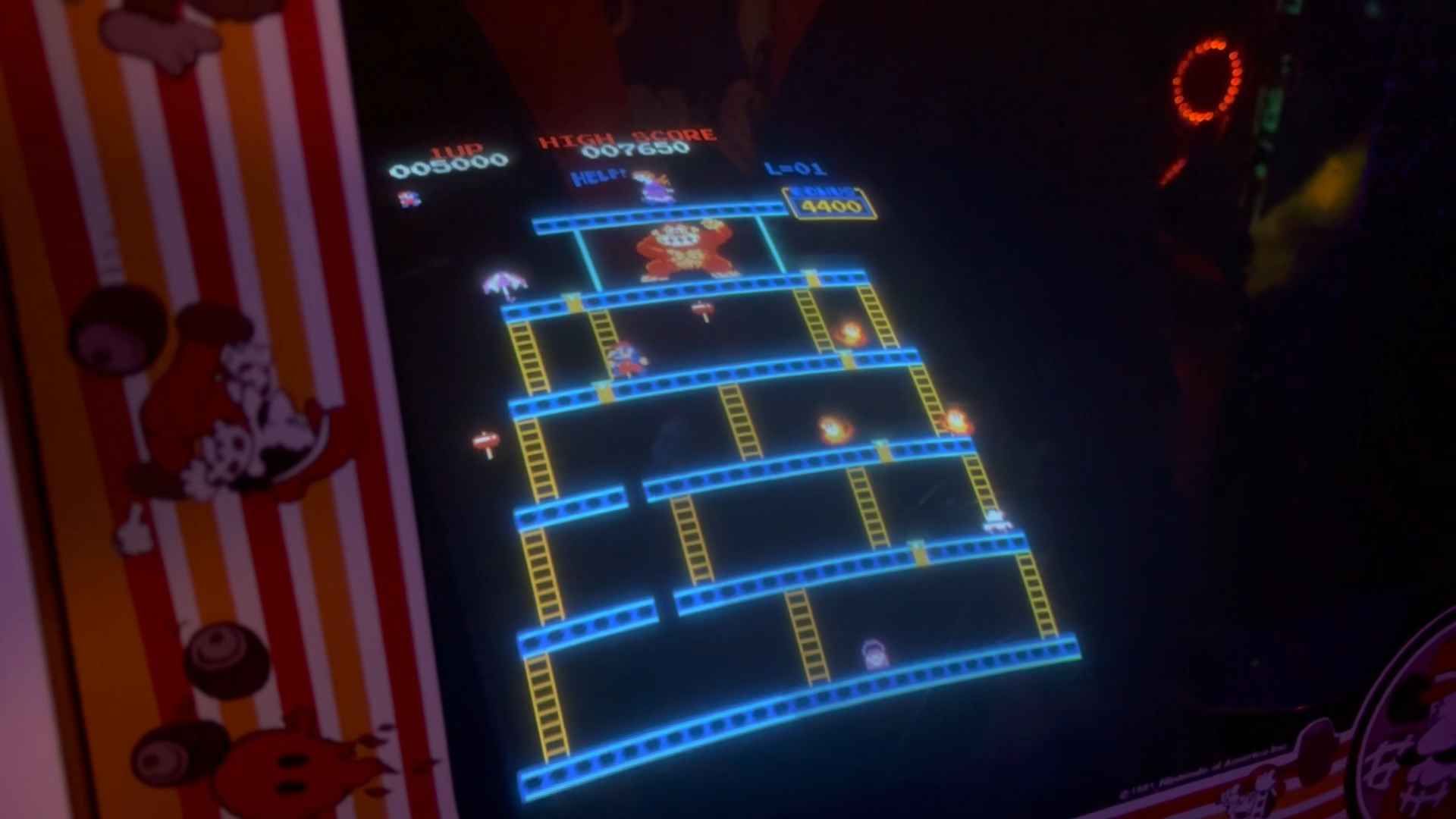
Throughout this process, Miyamoto offered up various ideas and points of improvement. According to Komanome, one of the most memorable ones was a change to the end stage. Originally the idea was to have a bell fall on Kong’s head and knock him out. But Miyamoto decided it would be more comical to have all the structural joints in the building removed as a mechanic, so the girders would collapse and Kong would plummet to his doom.
Donkey Kong Development
The actual coding for the game didn’t start until over a month in, during the middle of May. All of which was done on a Mostek SYS-80F. A Z80 based machine that was CP/M compatible, but didn’t even have a hard drive. Instead all the coding was read and written to single-sided, single-density 8″ floppies.

The ROM space that the programmers had to create the game in was 16KB. To put that into perspective, that’s 0.000016GB. In other words you could fit 62,500 copies of Donkey Kong into a GB.
In terms of display, they had two layers. The sprite layer and the background VRAM layer. In Radar Scope, the background layer was only used for messages, your health bar and the score display. But Donkey Kong would need to utilise it a lot more..
This VRAM layer is allocated into still images, such as the game messages, scores and steel girders. It allows for 3 colours per line and a tile size of 8×8 pixels. If you take all the background elements from Donkey Kong’s first stage, you get this. Yep, these tiles make up the entire background.
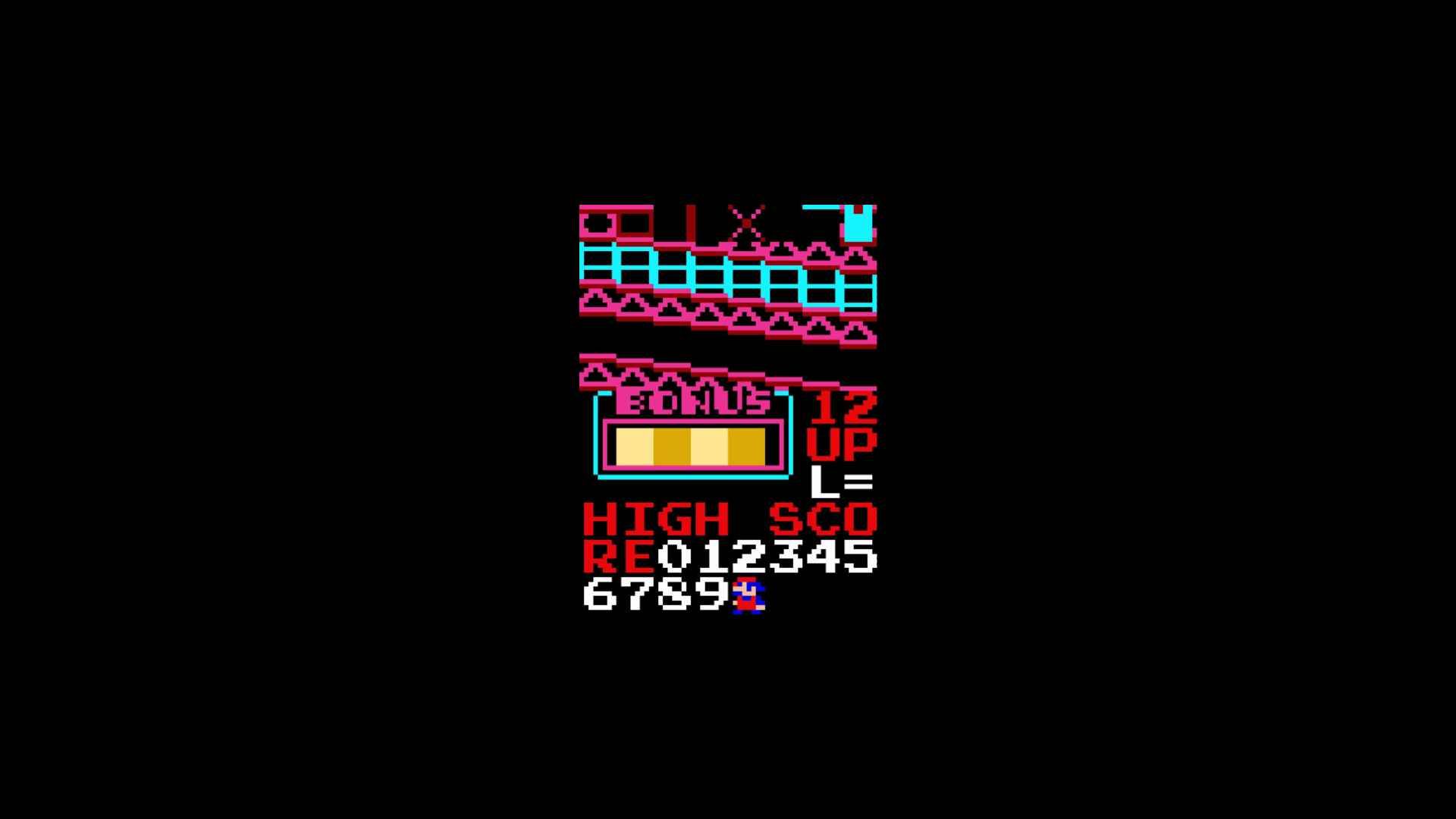
Split up Donkey Kong’s screen and you can see what’s going on. The girders aren’t really slopped, they are just shifted versions of the tile. To achieve this we need 8 girder tops and 8 girder bottoms, along with versions containing ladder tops and bottoms. Then we’re good to go, we just need to add sprites.

This is where things get tricky. Every thing here needs to be processed with every screen redraw, so we get 1/60th of a second to animate everything. Given the Z80 clock speed is approximately 3MHz, that equates to 49,800 clock cycles. You need 3,600 clock cycles for the Direct Memory Access to transfer the sprites to the screen, leaving 46,200 for everything else. A Z80 instruction consumes roughly 10 clocks, meaning the game needs to reside in 4,620 instructions.
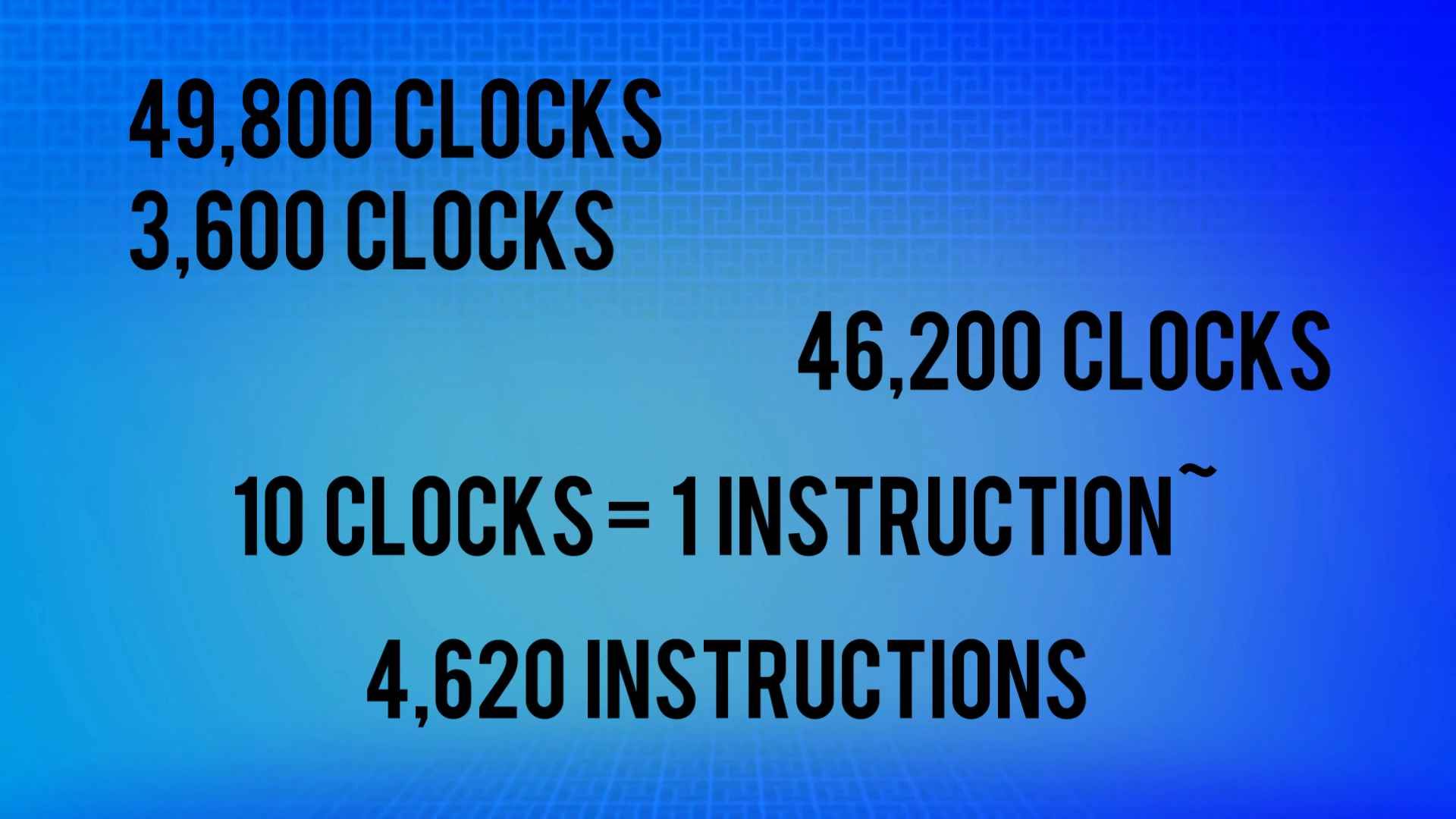
As Komanome states in his interview, “When creating game programs in those days, the first requirement was processing speed, the second was memory and the third was a program that could run quickly”.5
A key part of making sure the game worked was collision detection, which was a huge problem for Donkey Kong. Whereas games like Radar Scope only needed to check the collision between moving sprites, here it needed to check with the background, so that our guy could actually walk on the girders and climb up ladders.
As the background VRAM layer was arranged in tiles of 8×8 pixels, whilst the sprite layer was delineated into individual pixels, it meant that this used a lot more clock cycles compared to just checking sprite collisions.
The team eventually managed to squeeze this into 12,000 clocks, leaving 34,200 for the remainder of the game.
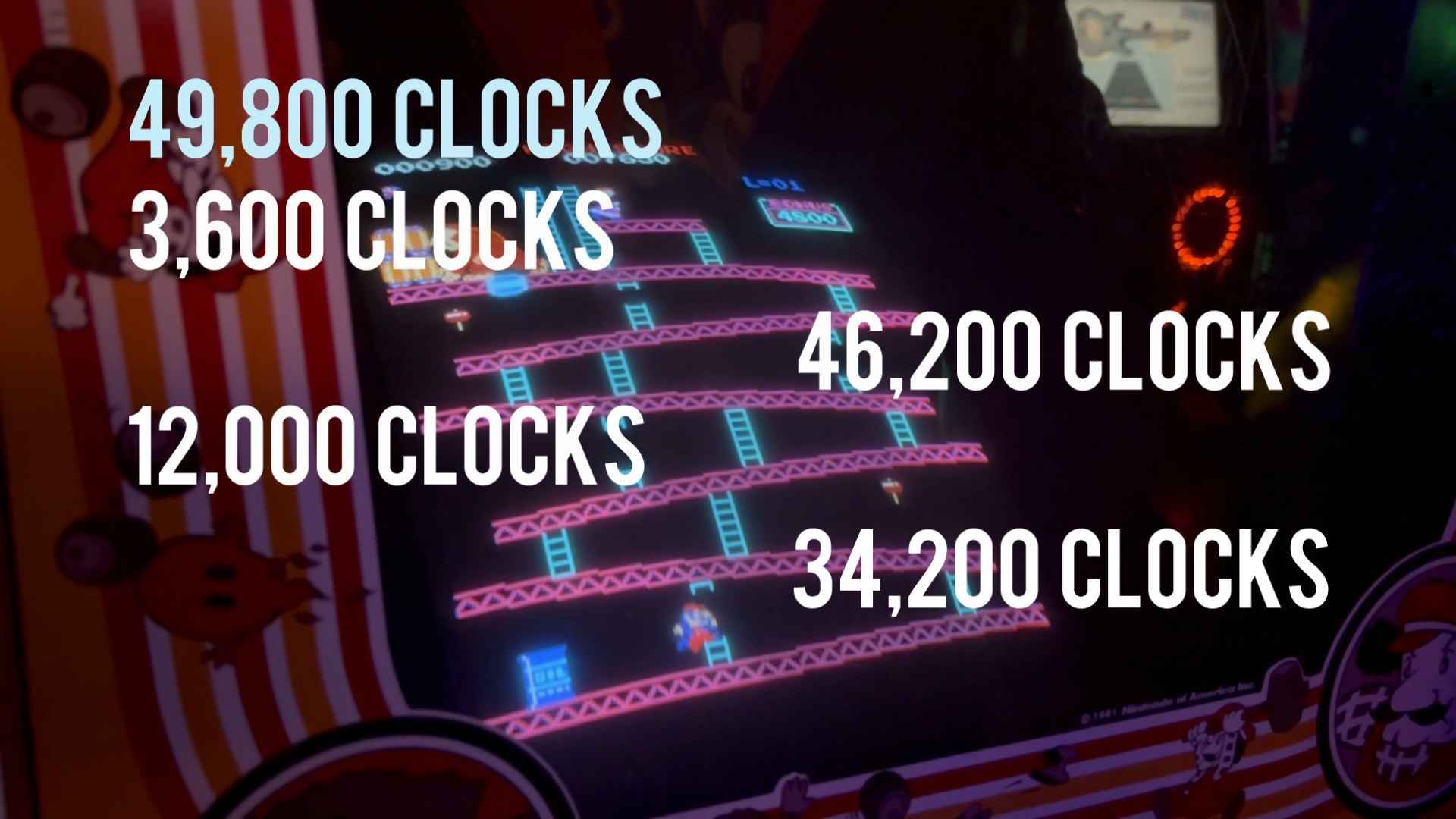
Programming the Jump proved difficult as well. The Z80 processor couldn’t perform floating-point arithmetic, and integer multiplication would take too much time, so they relied on second-order derivatives, requiring only bit shit and addition calculations.

These calculations were used throughout the game, not only for the jump trajectory, but also for barrels bouncing and rolling off steel girders. This created a physics based world which at the time seemed incredibly realistic.
A great deal of time was spent on refining the code, making it more efficient and ensuring it would work within the memory and time constraints given. If it didn’t then the game simply wouldn’t play, but time was running out, and by June they needed to focus on the debugging stage.

But this wasn’t like the debugging of today. Ohhhh no. No nice prompts. No line numbers for you to check. Whilst today might be like driving around on a ride on mower, this was the equivalent of being given a pair of blunt scissors to cut your lawn with.
Ikegami had one single computer, their trusty Mostek SYS-80F. The four members of the team would share this single computer creating a schedule, so that they could work in shifts around the clock, inputting, editing and debugging Z80 machine code instructions.
Connected to this computer was a Casio “Typuter”, which made use of roll paper, requiring the team to check constantly for jams and make sure their compiler list was printed successfully.
Each night, when Komanome left the office, he would enter the print command and hope the list would be completed for 8:30am the next day.
This list would highlight compilation problems in red, allowing the team to cut up the printout, fix the problems and then try again.
The team would be able to test the game by converting the program to ROM, which meant converting the binary code to intel hex and passing it to a ROM writer machine which relied on paper tapes.
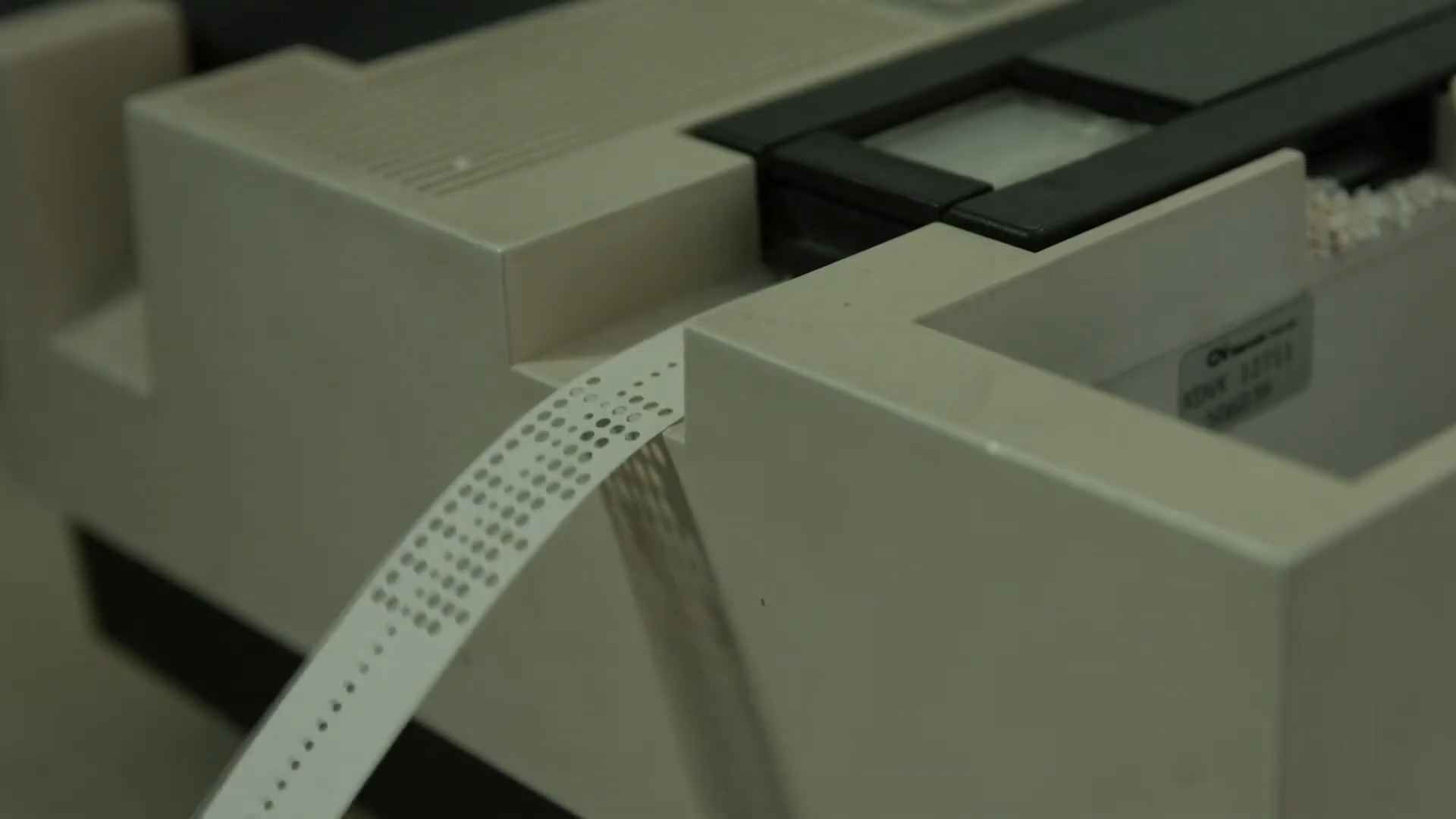
This was an incredibly challenging environment in which to create a game in just 3 short months.
However, miraculously, Ikegami achieved the impossible, and by the end of June, ROMs were shipped out for location testing.
It won’t Succeed…
When it landed on the desks of Nintendo of America, the sales team weren’t impressed. For some reason they seemed to want more games that were similar to the maze and shooter titles out at the time. They didn’t think that this new construction site carpenter had the gravitas to make this a compelling game.
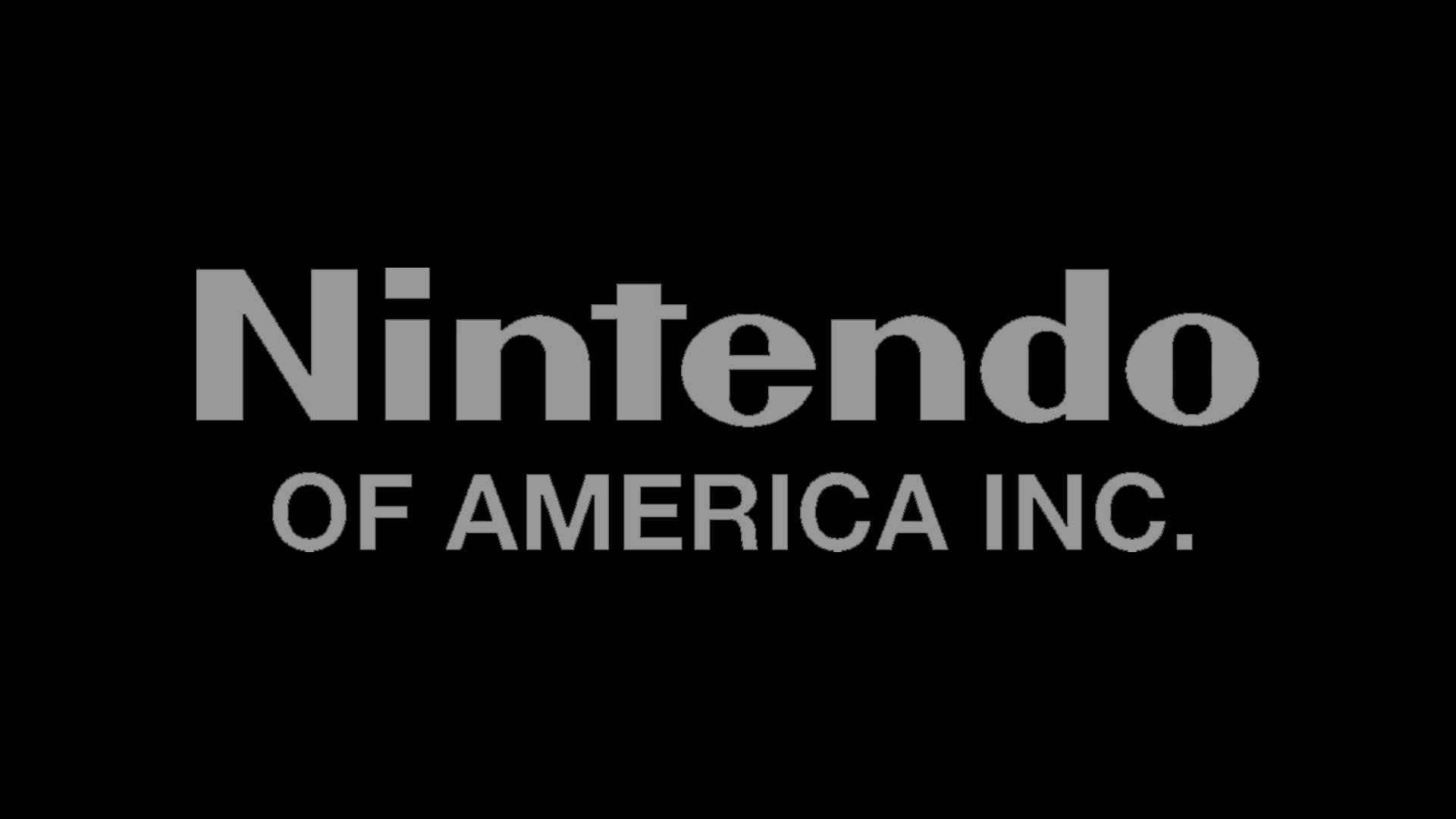
But, it worked. The game was playable, and it was enjoyable. Playtesting indeed seemed to confirm this, and despite their reservations Nintendo of America also really had no other choice, their time was up, and if this wasn’t a success then they could kiss their asses goodbye.
With a somewhat hesitational nod, the green light was given for the mass production of the conversion kits. These kits consisted of a new marquee, side art, bezel, control panel and the revised ROMs. Making these initial machines a bit more riff raff than we would come to expect of Nintendo hardware.
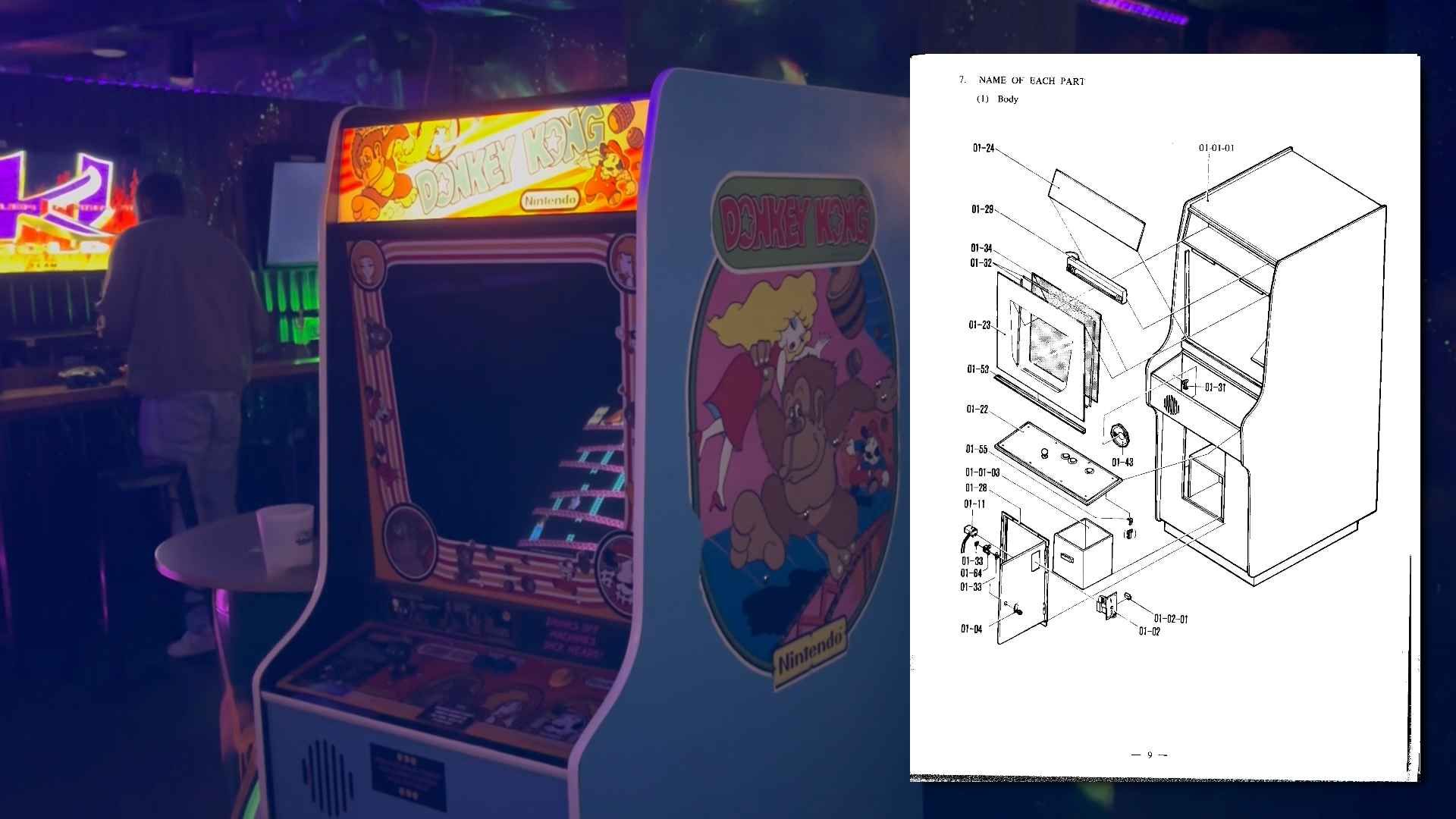
Shipped to Nintendo of America, the remaining 2,000 Radar Scope machines were converted by a small team, including Minoru Arakawa and his wife. Instructions were also printed, with our protagonist now named “Jumpman”, citing his main ability, and trying to capitalise on the Pac-Man phenomenon.
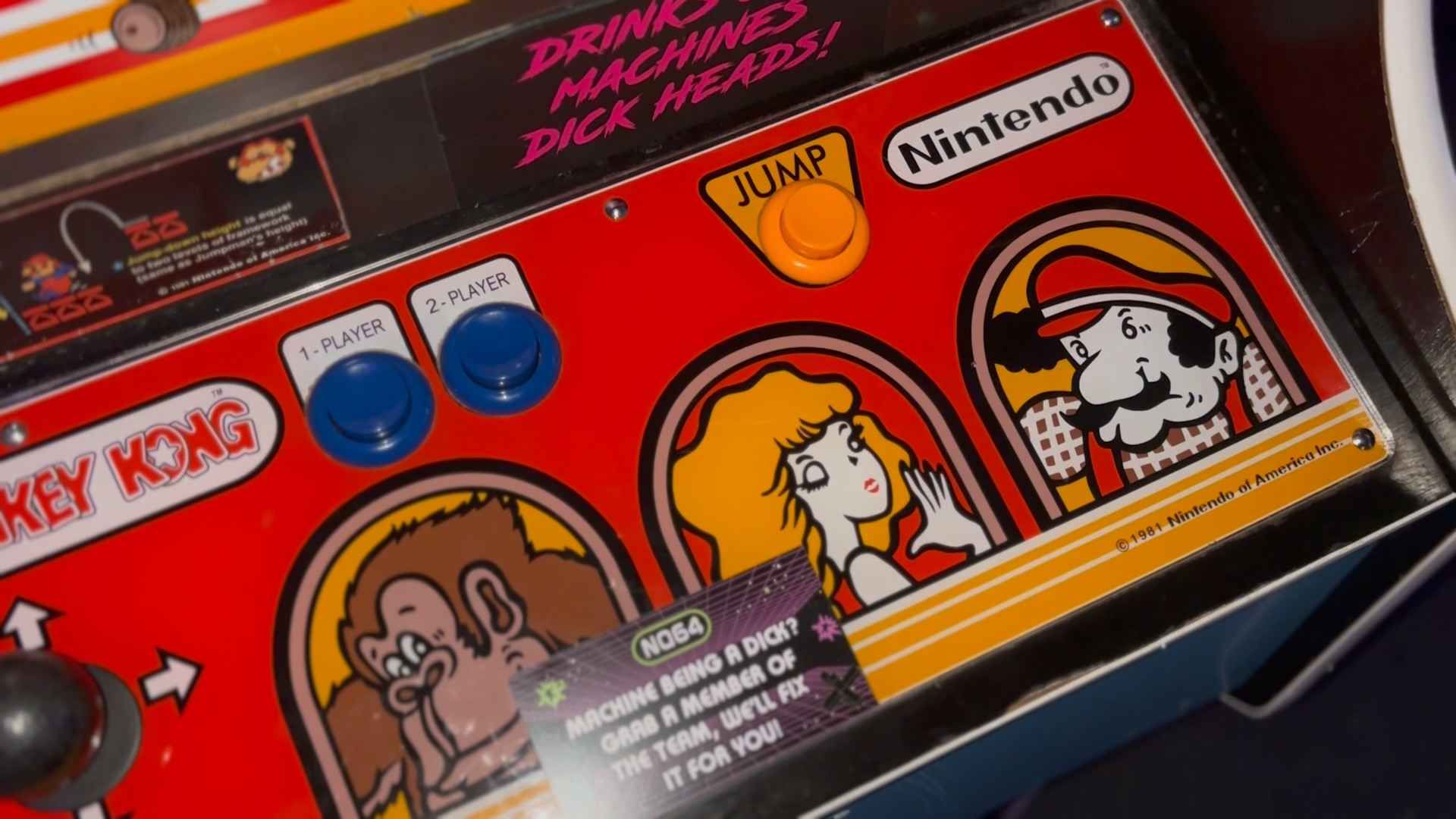
In this period Nintendo of America had actually moved to Seattle, in order to avoid the shipping and transport delays they had encountered with Radar Scope. They didn’t want to repeat that costly mistake. Their warehouse’s landlord, Mario Segale was keen to get hold of rent, that the new machines would hopefully bring in, and so warehouse manager Don James and Arakawa decided that Mario would actually be a better fit for our character than Jumpman. This quickly spread to marketing, where, alongside “Donkey Kong”, “The Beautiful Girl”, and “The Brave Carpenter” images, we can see references to “Little Mario” throughout the synopsis7. You can see that Nintendo of America also started to soften his look, from what appeared to be a grumpy, middle-aged workman, to something a bit fresher and appealing to America’s youth. After all, in Miyamoto’s mind, Mario was supposed to be in his mid twenties.

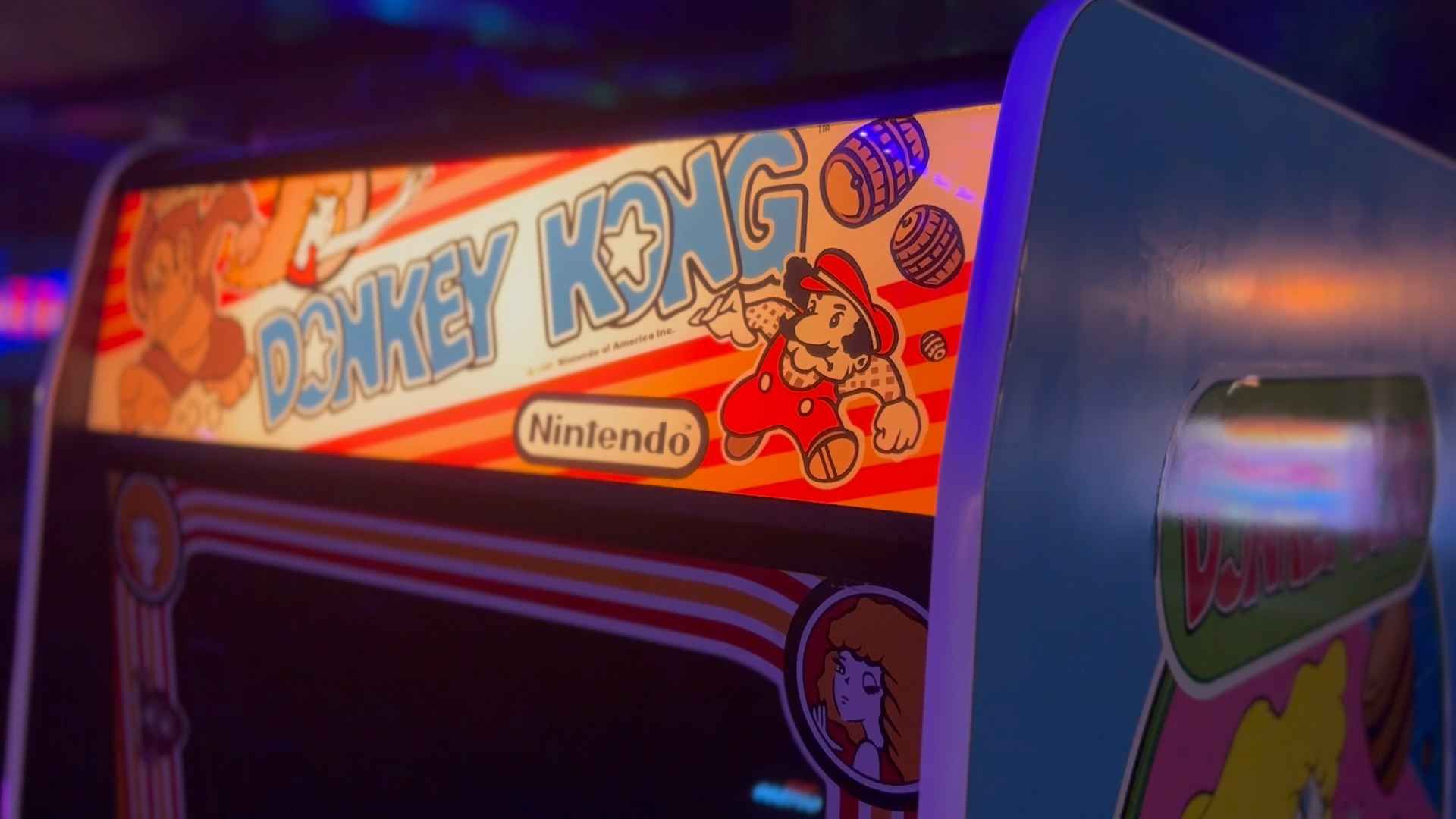
With everything in place, the game shipped on 31st July 1981, and was an instant success.
Nintendo ordered 8,000 boards from Ikegami, allowing it also to be launched in Japan, where Mario still had no official name, and by November it had also landed in Europe.
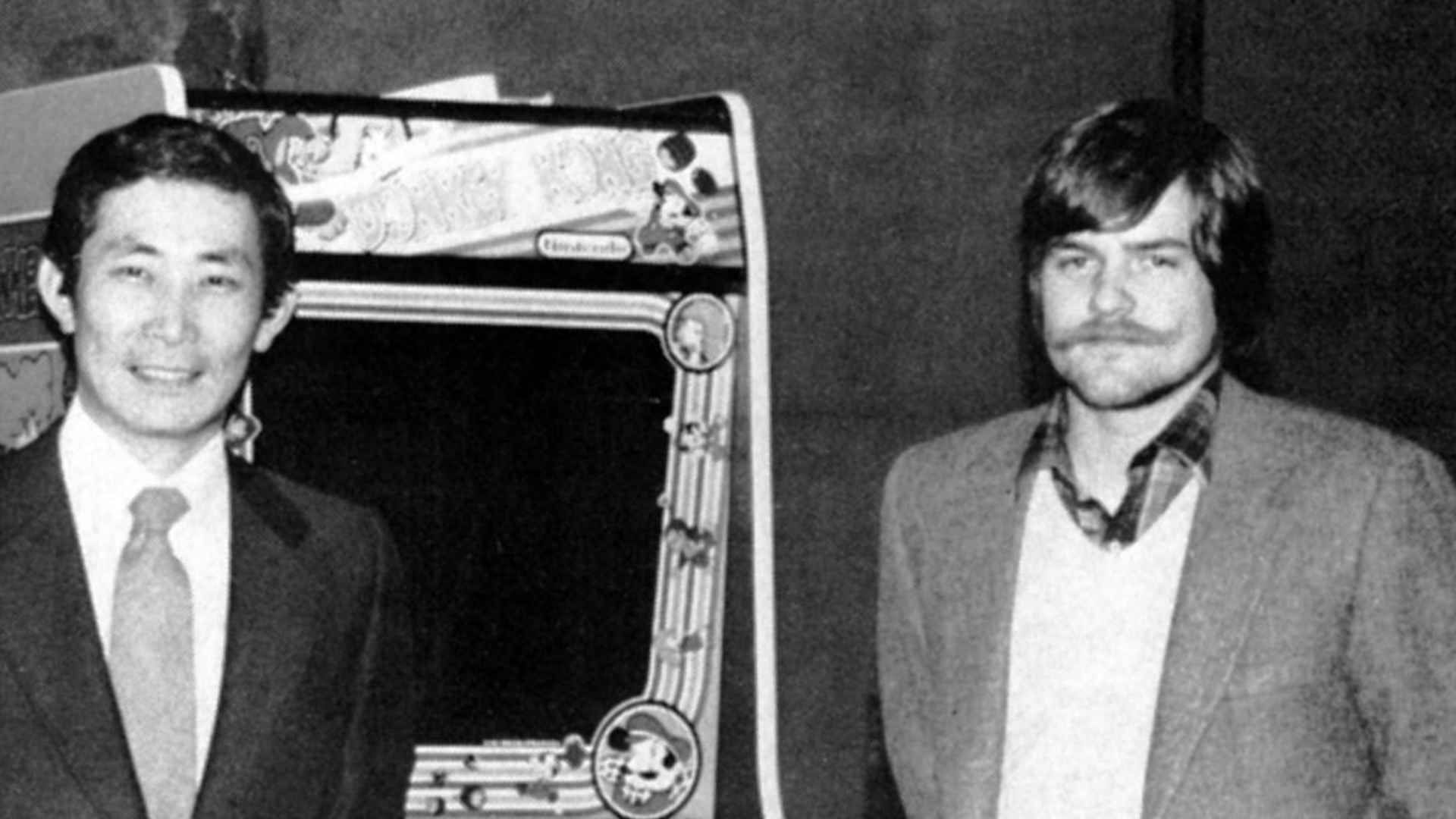
There were differences in the North American release compared to the Japanese release, including the level order8, with North America keen to show off Mario’s jumping move by putting this level in the second round, as opposed to the conveyer belt. Interestingly, the “How High Can you Go” message between rounds is also a subtle nod to Scramble’s message of “How Far Can you Invade”.
But whether you play the Japanese or Western version, Ikegami’s 4 man, inexperienced team helped convert one of Nintendo’s biggest failures, into their biggest success, paving the way for not only a future line of Donkey Kong and Mario games, but also their Famicom and NES console that leant heavily on Miyamoto’s character, and the many roles dreamt up for him.
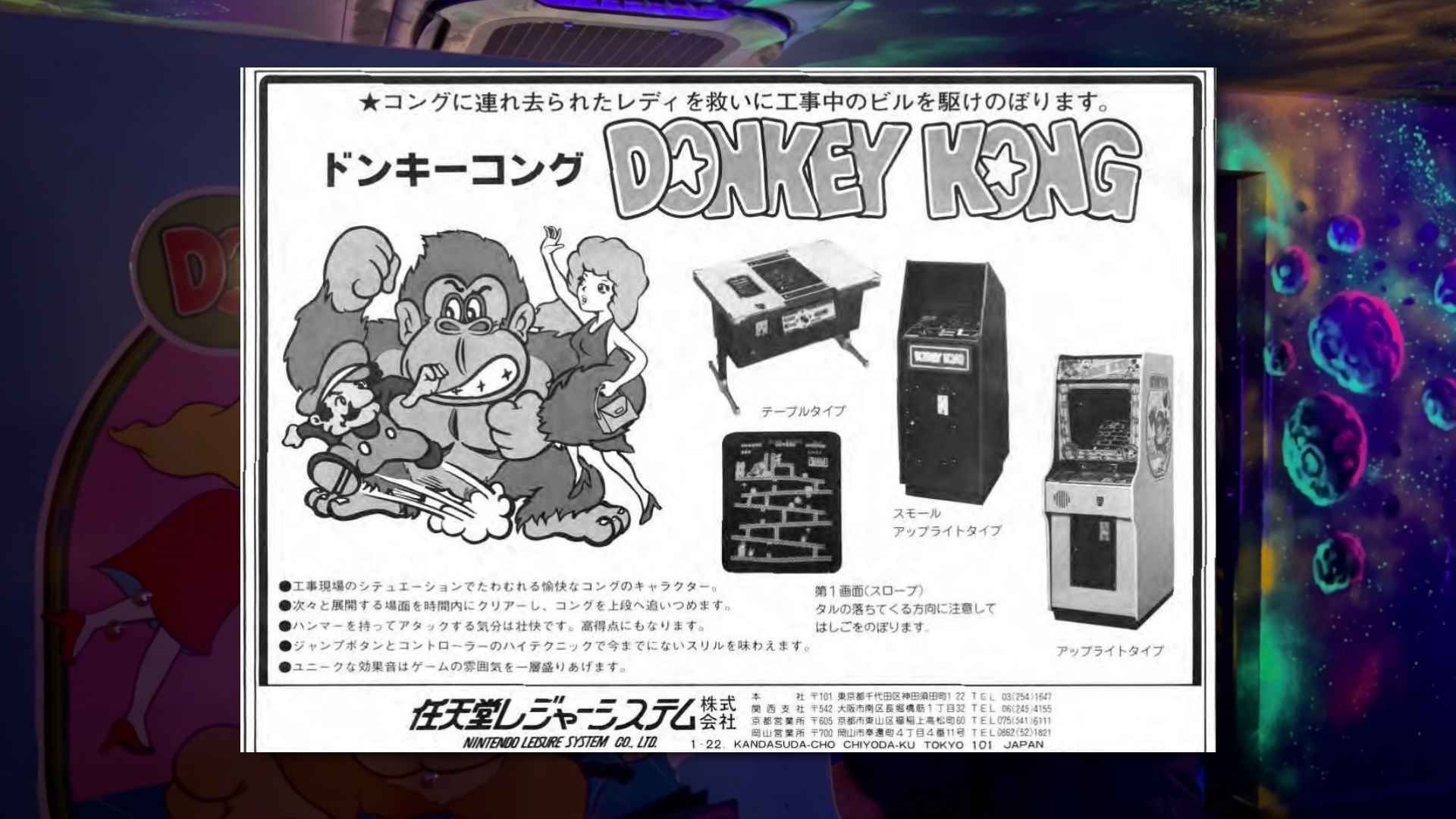
But this wasn’t the end for Ikegami’s development team. Komanome recounts how a month after development was completed, they received a bug report that when a player jumped from the right end of the second steel girder, they would fall and the lower body of the sprite would appear at the top of the screen, ending the level. This was quickly fixed by modifying the limit address of the right screen by a single pixel, and implemented for any ROMs produced going forward.
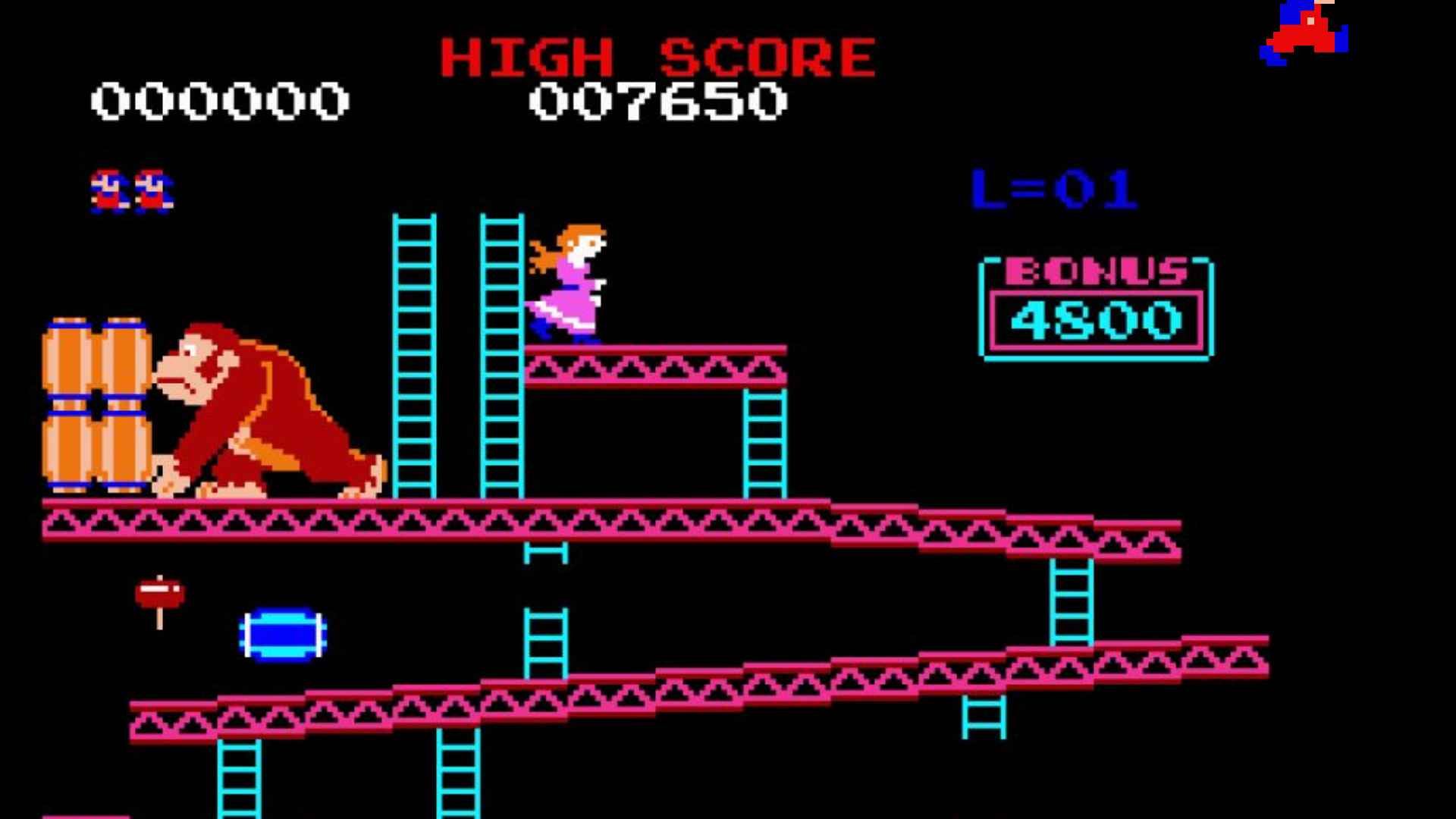
The team also inserted the following message at the end of the program as a joke;
“CONGRATULATION ! IF YOU ANALYSE DIFFICULT THIS PROGRAM WE WOULD TEACH YOU. * TEL…
Although given Donkey Kong’s success, lots of clones, including Falcon’s Crazy Kong popped up, and developers actually took the message seriously, contacting Ikegami directly to see if they would teach them how to make their own version of the game.
I mean, it’s worth trying.
After Donkey Kong, Nintendo would produce Donkey Kong Jr. in 1982, followed by Mario Bros. and Donkey Kong 3 in 1983, however, Ikegami were not totally happy with this.
The Donkey Kong Lawsuit
On July 20th 1983, Ikegami Tshushin filed a lawsuit against Nintendo in the Tokyo District Court seeking 580,000,000 yen in damages for copyright infringement of Donkey Kong. The lawsuit stated that in January 1981, Ikegami Tsushinki entered into a contract with Nintendo, in which it would develop a game on Nintendo’s behalf, provide hardware and that Nintendo, or any third part would not be allowed to copy the programs.
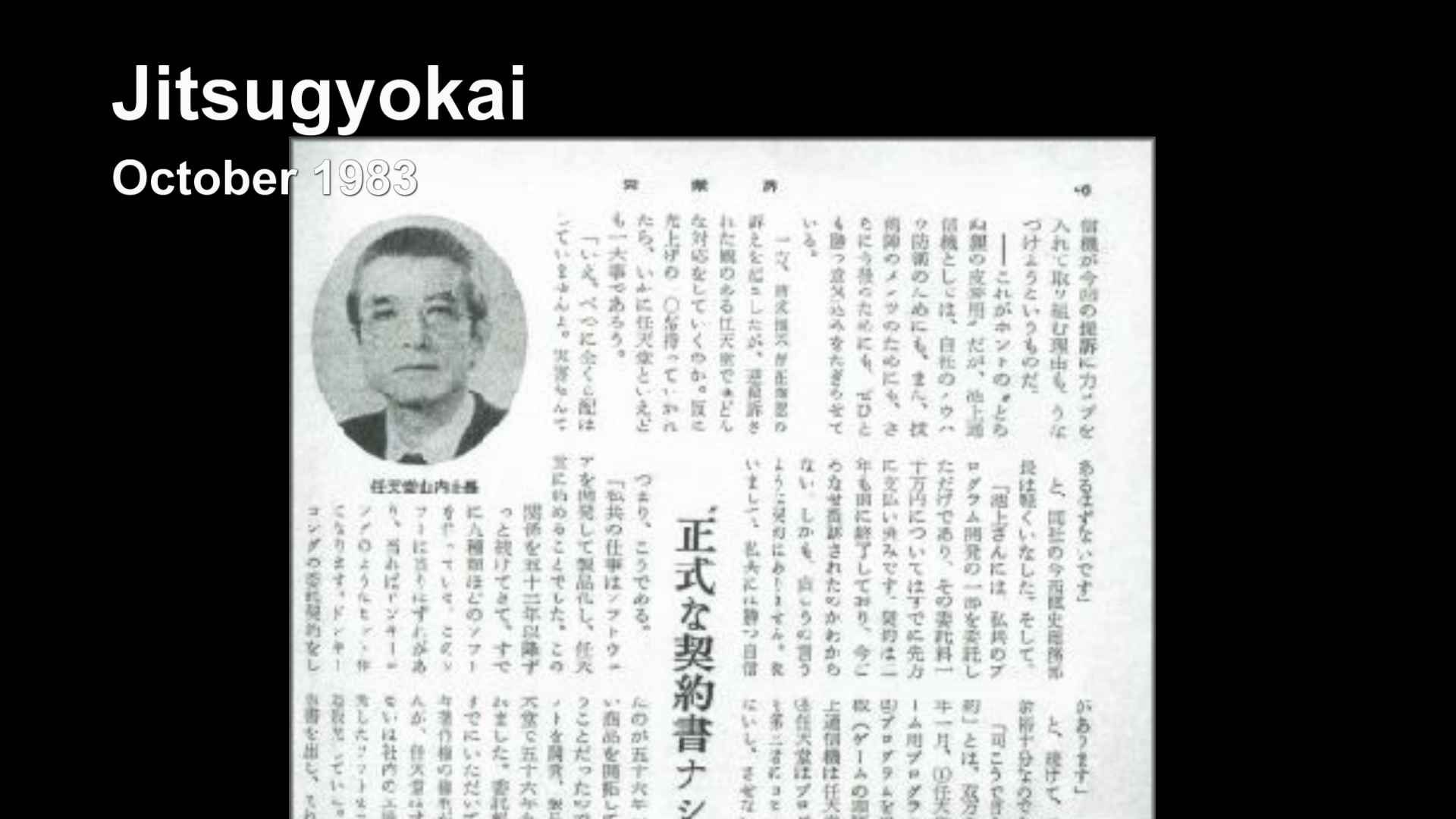
Nintendo disputed this, and in 1982 had analysed the components of Ikegami’s boards and mass produced identical copies, selling at least 80,000 throughout Japan and the West. They also sold Donkey Kong Junior which was a modified version of the original program.
The lawsuit sought damages for breach of contract and 10% of this sales price.
Hirofumi Imanishi, General Affairs Manager of Nintendo at the time stated “we only outsourced part of the program development to Ikegami and have already paid 10,000,000 yen in commission fees. It is unfortunate that a lawsuit has been filed to years after the contract ended”.
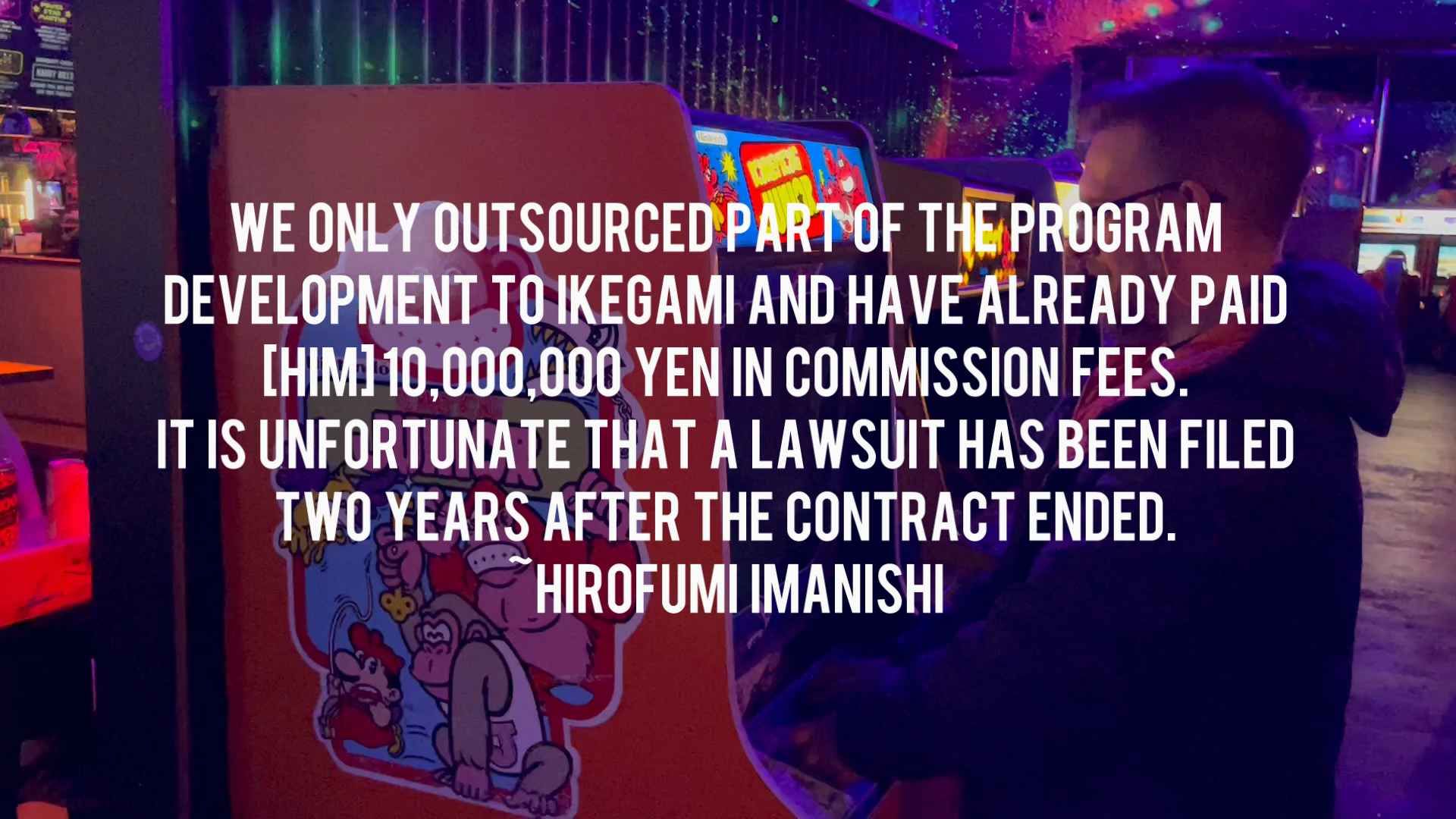
Due to unestablished law around game copyright at the time, the case was pending up until 31st August 1988. Nintendo would eventually pay an out of court settlement and the matter was resolved.
Nintendo’s Greatest Idea
Ultimately, in the end, the actual ideas of Donkey Kong belonged to Nintendo, despite Ikegami’s input and development, and as we’re all aware, they’re the things which have kept producing money for Nintendo ever since.
But without Radar Scope, and Ikegami, it may never have existed in the first place.
Until next time, I’ve been Nostalgia Nerd.
Toodleoo.

Nostalgia Nerd is also known by the name Peter Leigh. They routinely make YouTube videos and then publish the scripts to those videos here. You can follow Nostalgia Nerd using the social links below.
- web.archive.org/web/20190502051532/https://www.usgamer.net/articles/35-years-ago-nintendo-had-its-first-brush-with-video-game-disaster [↩]
- tcrf.net/File:Donkey_Kong_(Arcade)-prerelease-design_doc.jpg [↩]
- www.seattle.us.emb-japan.go.jp/files/100049285.pdf [↩]
- web.archive.org/web/20161221002034/https://www.wired.com/2016/10/miyamoto-donkey-kong-secrets/ [↩]
- shmuplations.com/donkeykong/ [↩] [↩]
- web.archive.org/web/20160817011232/https://www.nintendo.co.jp/nom/0002/01/miyamoto.html [↩]
- classicgaming.cc/classics/donkey-kong/images/flyers/1981nin_usa1b.jpg [↩]
- strategywiki.org/wiki/Donkey_Kong/Walkthrough [↩]

